Author Archives: Josh
Flying Away
2015 wasn’t supposed to include a Colorado trip. After our visit last summer, I wasn’t planning to go back for a long time. Life had other plans as it so often does, and on May 29th I found myself on an airplane heading back to Colorado to say a final goodbye to my Aunt Carol who lost her fight with cancer. This mountain valley had now lost some of its beauty and charm.
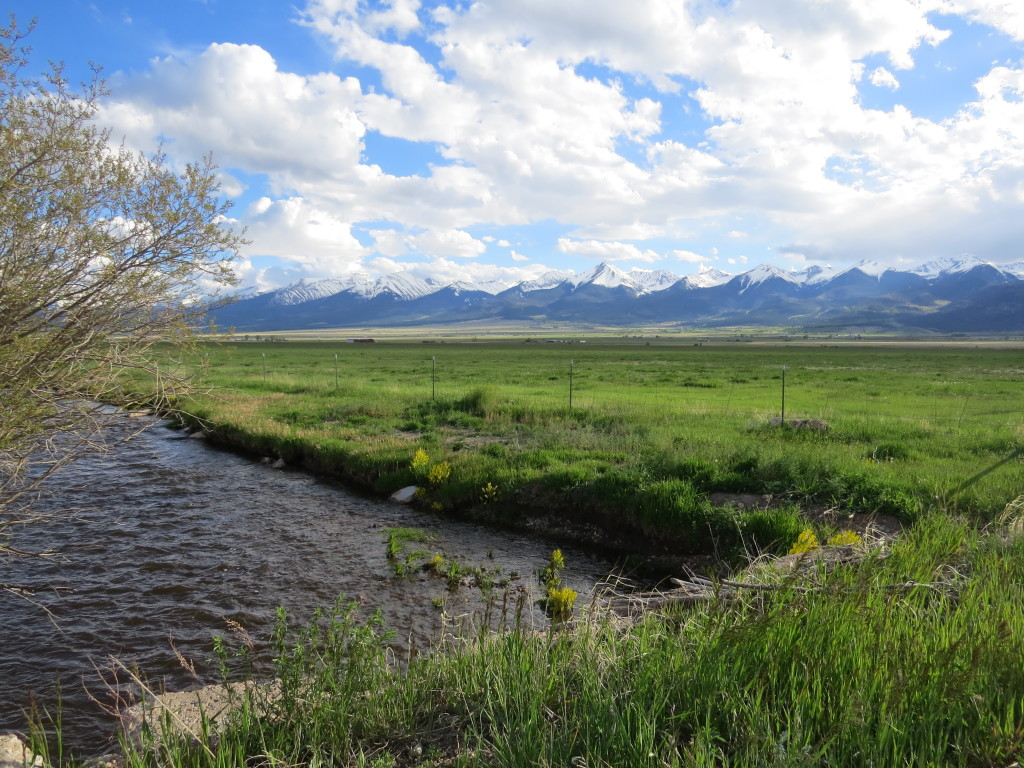
Aunt Carol meant a great deal to many, many people. I have many fond memories of staying at Uncle Jon and Aunt Carol’s house as kid and then visiting them a few times as an adult. She had a zest for life and was always game for something fun and spontaneous, especially if it involved having a good time with people she loved. In these ways she embodied the things I enjoy most about birding. Speaking of birding, Aunt Carol has always been a big fan of birds. Long, long before I was a birder, I remember her raving about the beauty of the Rose-breasted Grosbeaks that would visit their Minnesota home. I remember thinking that was something I had to see.
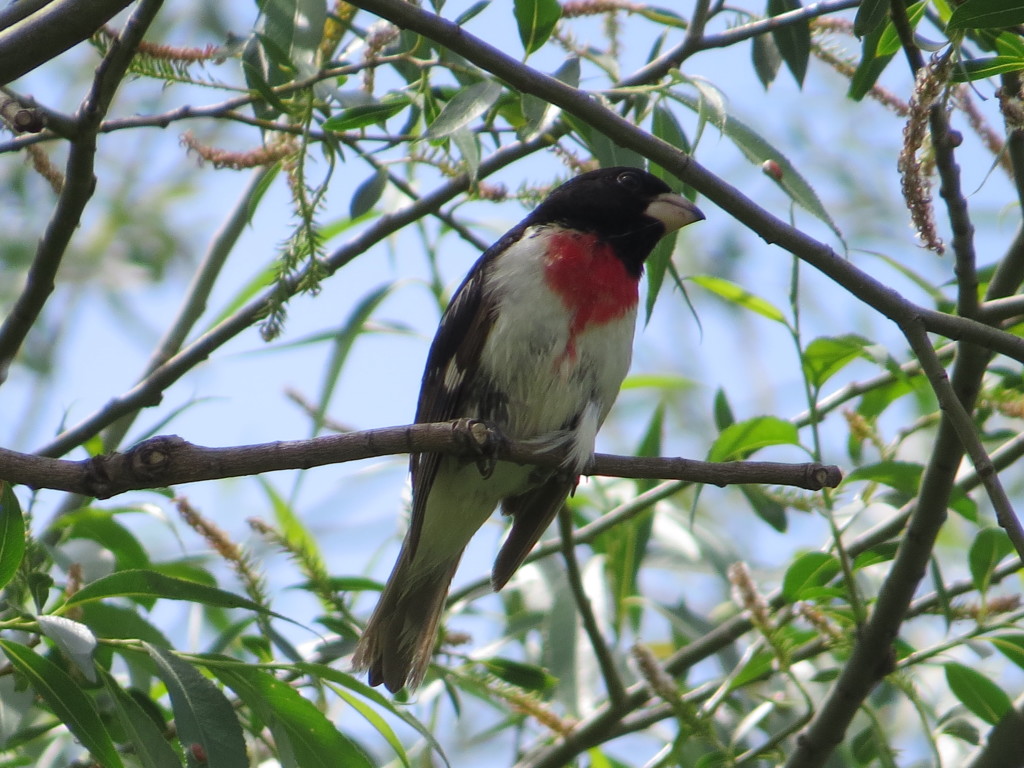 In her Colorado home, Aunt Carol spoke fondly of the Mountain Bluebirds which are common at their mountain residence. Carol had quite the special relationship with these birds as a pair would nest right outside her bedroom. Last year she showed us how she could give a whistle and the male would fly in. It was pretty neat.
In her Colorado home, Aunt Carol spoke fondly of the Mountain Bluebirds which are common at their mountain residence. Carol had quite the special relationship with these birds as a pair would nest right outside her bedroom. Last year she showed us how she could give a whistle and the male would fly in. It was pretty neat.
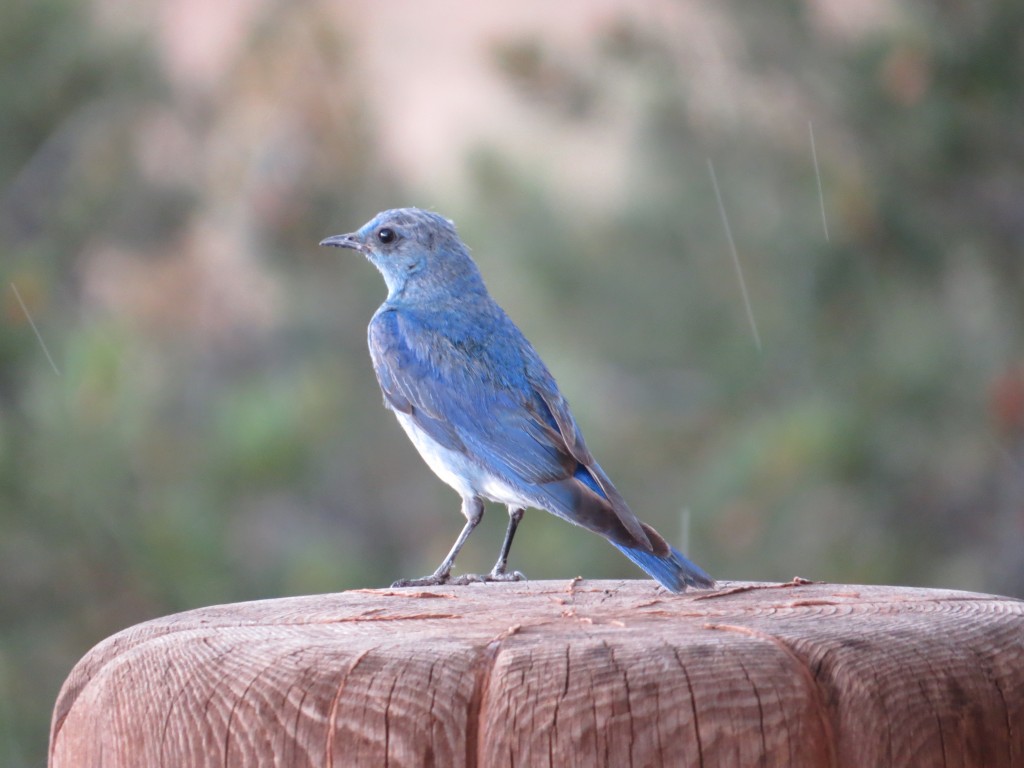
Aunt Carol’s “pet” Mountain Bluebird
On this trip to Colorado my cousin Danny pointed out decorations Carol put on her patio doors to help these Bluebirds avert window strikes.
Another bird that reminds me of Aunt Carol is the Bushtit. Last year she got quite a kick out of the bird’s humorous name, laughingly saying, “I think I’d like to see some of those Bushtits for myself!”
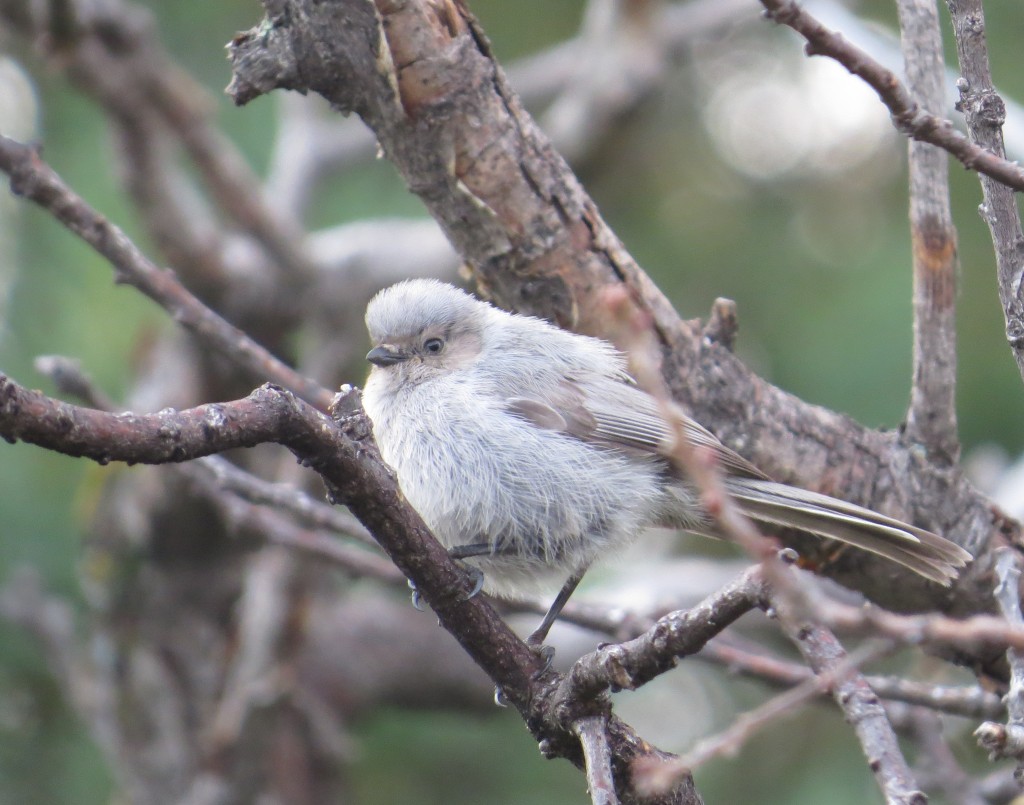
This trip was not a birding trip, but you can’t go to Colorado without seeing cool birds. Since we were flying in late at night on a Friday, busy with family most of Saturday, and flying home around noon on Sunday, there was only the slightest of margins to see these birds. However, don’t confuse birding the margins with marginal birding. Regardless of one’s time budget, good birds can easily be had in this state. I have a lot of birding left to do in Colorado that will require more trips, but knowing I wouldn’t have much time on this trip, I took a precision approach. I would focus on just one bird–a very common and very conspicuous bird I had never seen: the Bullock’s Oriole. It was very doable.
My brother, Jason, and I flew into Denver together and spent Friday night there. The next morning we would be joining my cousin, Karin, for the three-hour drive down to Westcliffe. With the help of eBird, I found Sondermann Park which was convenient stop in Colorado Springs just two blocks off I-25 at exit 144 where several Bullock’s Orioles had recently been reported. With trails that were short and right by the parking area, I convinced Karin and Jason that this would be a good stretch break.
Western birds were readily apparent with a Spotted Towhee being the first bird we saw/heard.
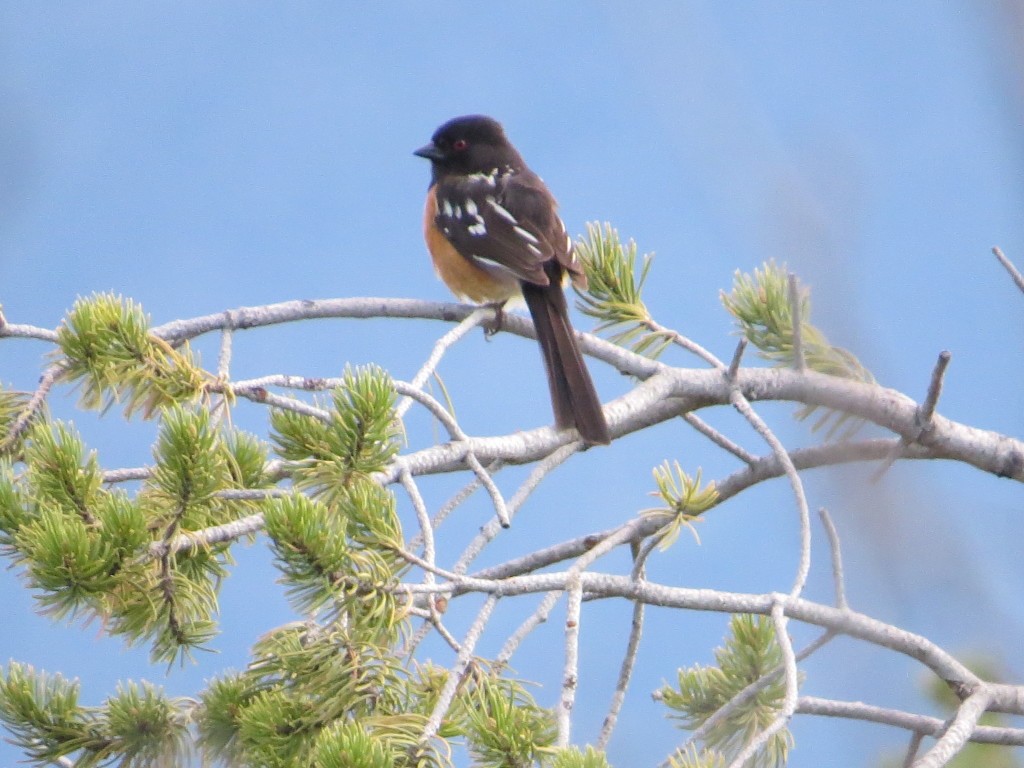
I was practically racing along the paths looking for my Oriole since we were short on time. In the meantime, it was fun to run into several Western Tanagers. I promise there’s one in this photo.
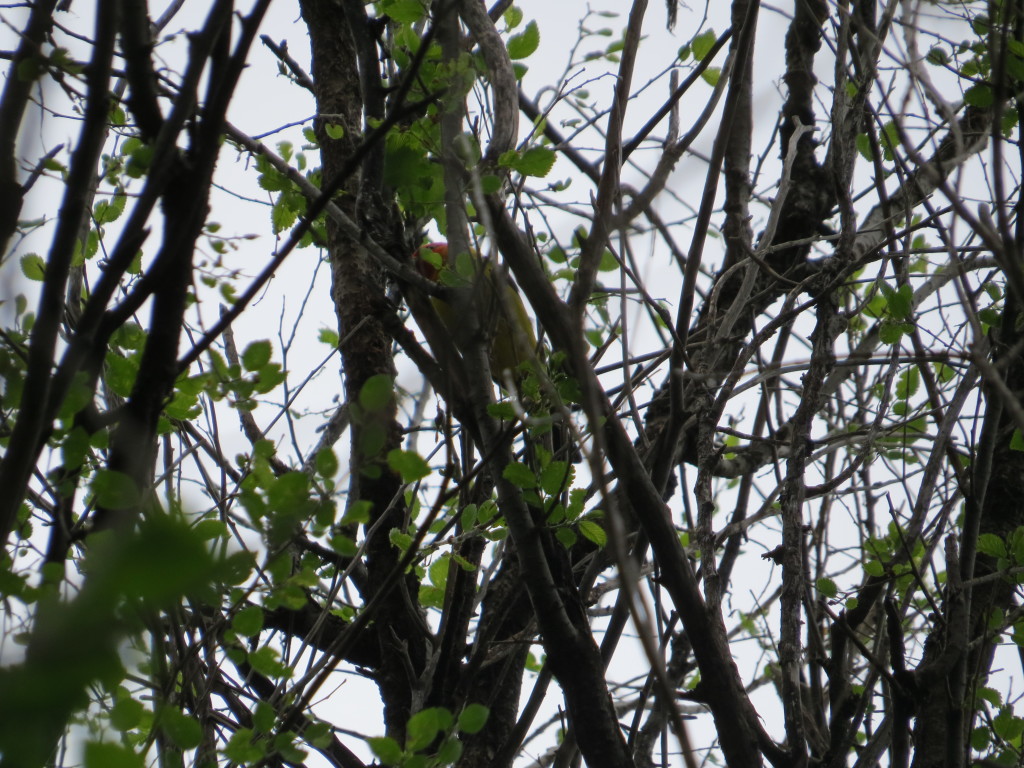
I did have better looks later on at some other WETAs, but I did something I don’t normally do–I enjoyed them through binoculars only. Other birds adding to the western flavor were a couple of Western Wood Pewees and a lone Bushtit. Eventually, though, I finally heard the familiar ratcheting call of a Bullock’s Oriole which sounds nearly identical to our Baltimore Oriole back home. The Bullock’s and Baltimore were once considered a single species known as the Northern Oriole. Genetic studies caused the species to be split into two in the 1990s. Despite hearing the bird, I either saw it in bad light or briefly as an orange streak in good light. Very unsatisfying, but a life bird nonetheless. We had to get back on the highway, though, so better looks would have to wait until some future date.
What did give great looks were some appropriately named Violet-green Swallows at our hotel in Westcliffe.
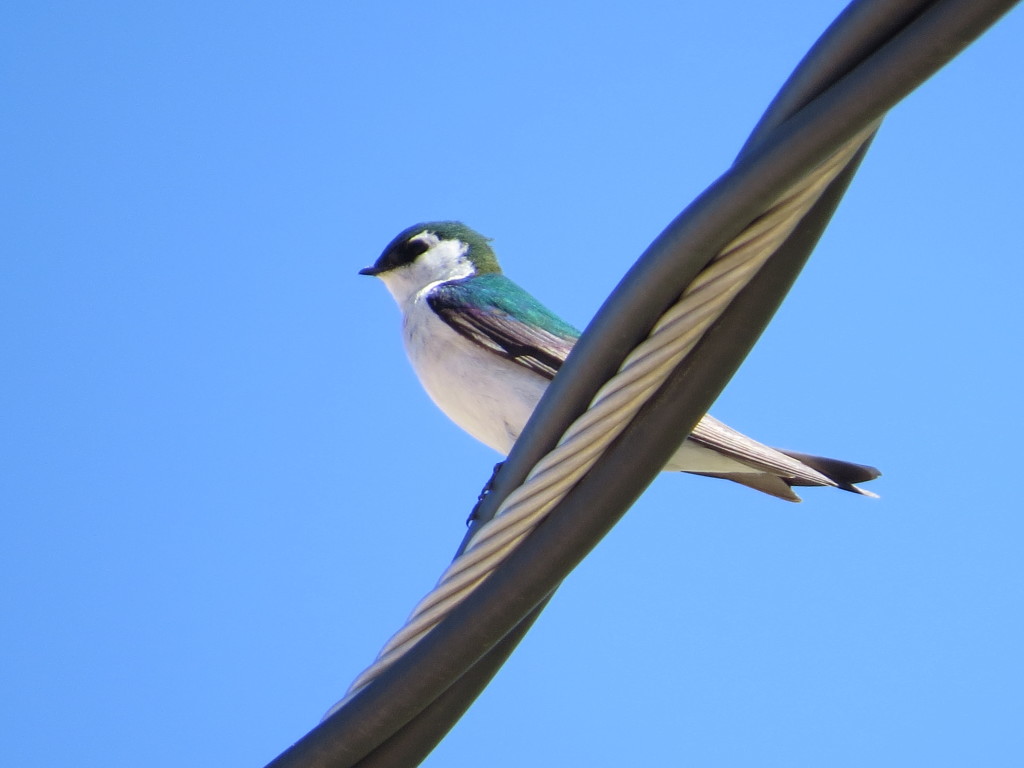
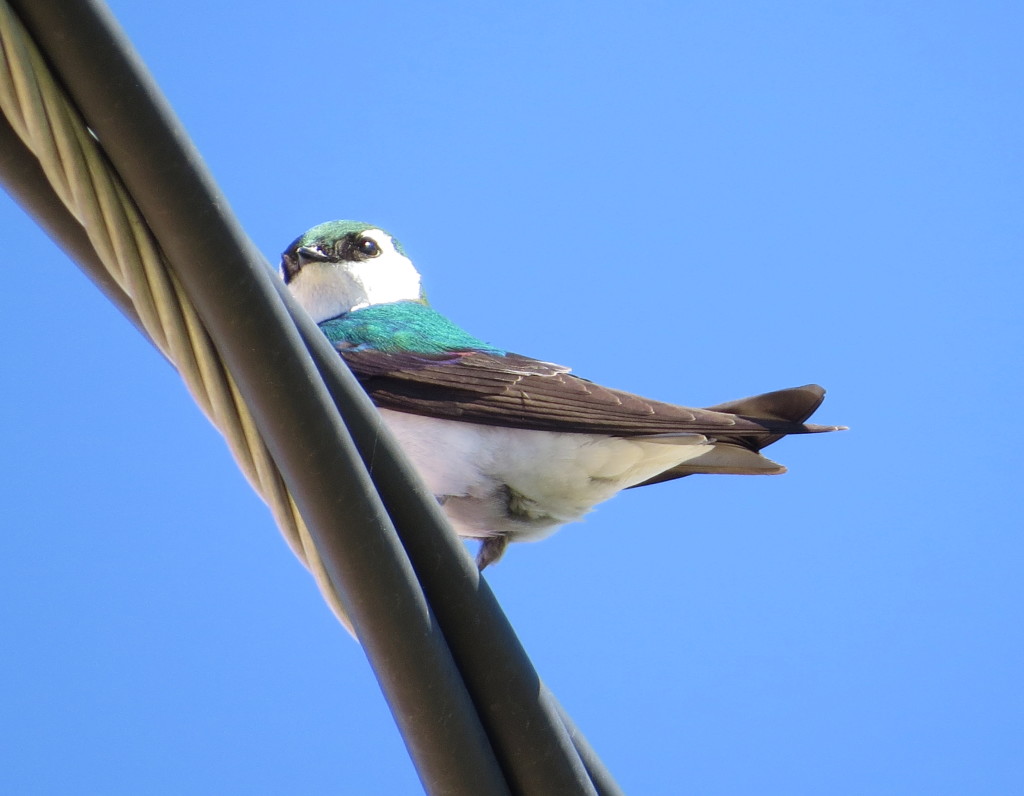
The trip was quite a whirlwind as Aunt Carol’s memorial service and a memorable family/friend gathering back at her house filled out the rest of the day. Before I knew it, it was time to wake up and hit the road back to Denver. I woke before my two traveling companions to see what birds might be around the hotel and to enjoy the refreshing morning.
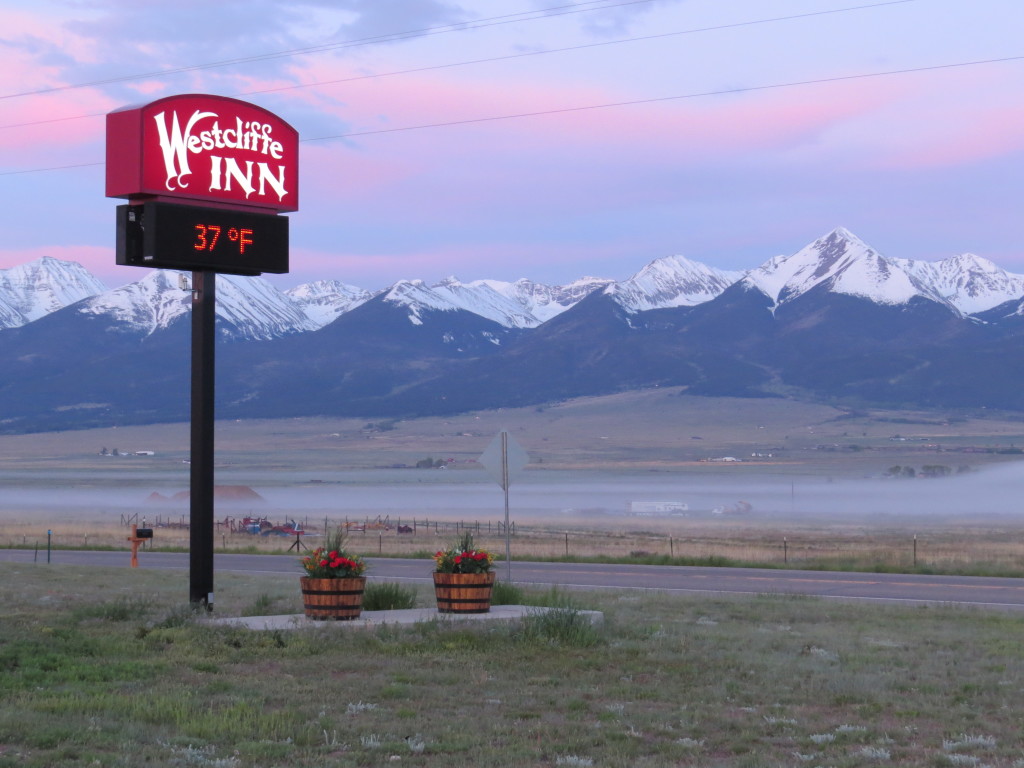
Birds or no birds, the Sangre de Cristo Mountains at sunrise are pretty spectacular.
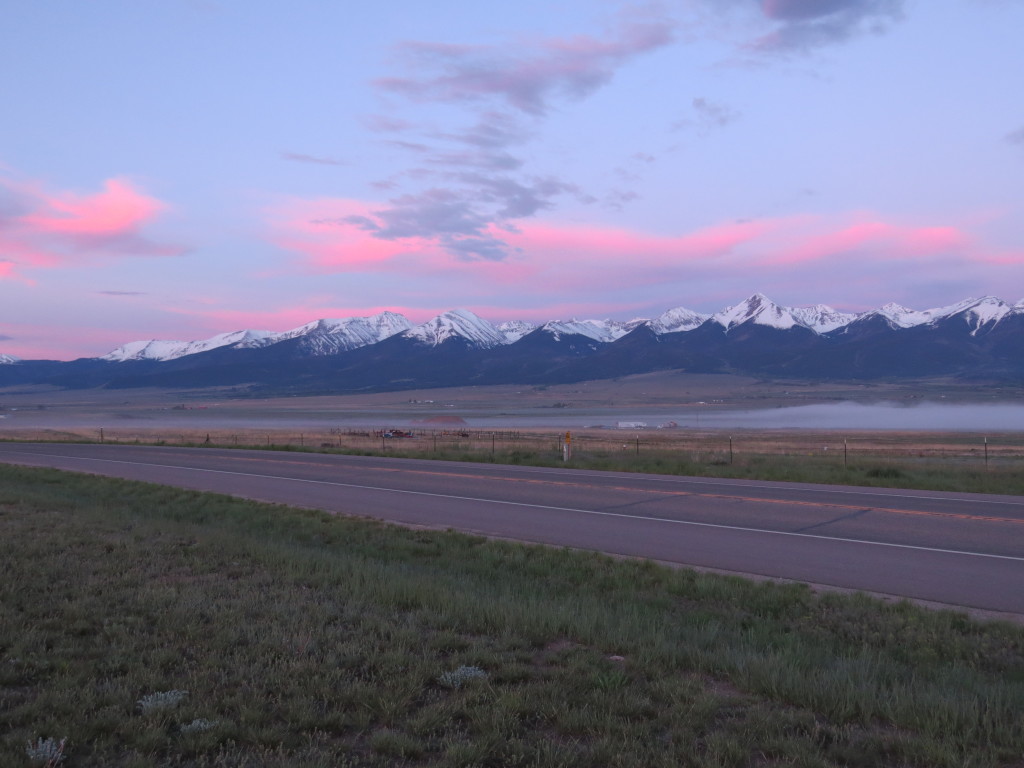
I did see one last pair of Mountain Bluebirds. Fitting.
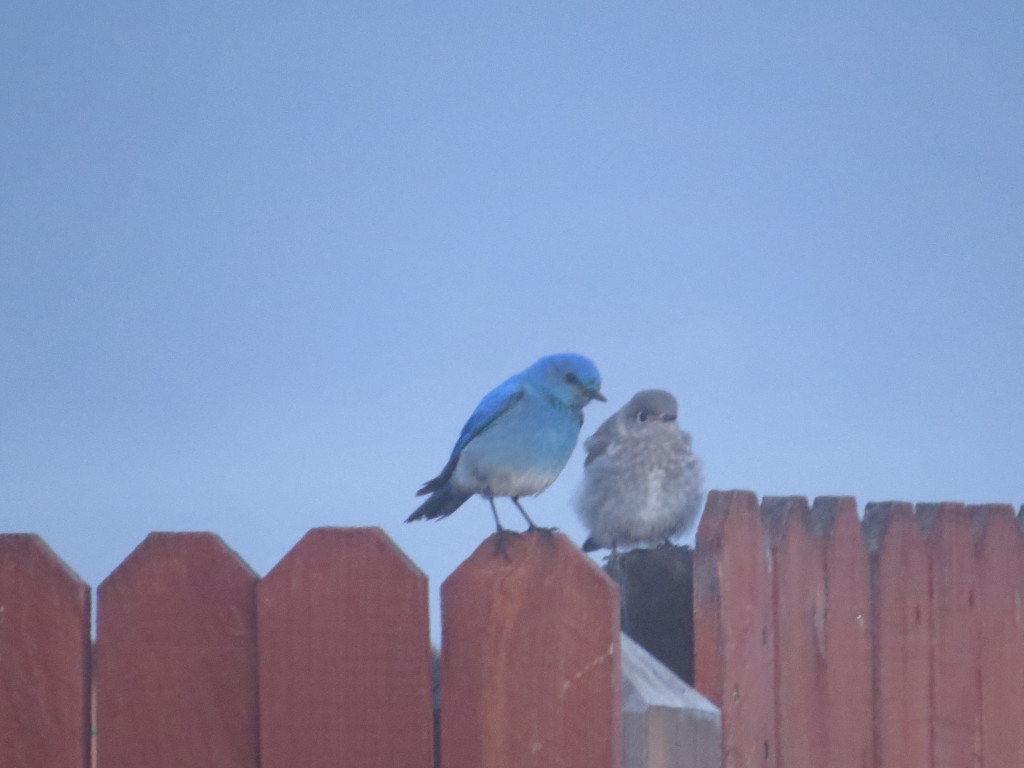
A short walk in the neighborhood gave me my second, equally unsatisfying, lifer of the trip. In the dim morning light I glassed a bird with a white chin, rufous cap, and long tail. It was a Green-tailed Towhee. I was also surprised to find a White-crowned Sparrow; I didn’t know they were summer residents here.
Shortly thereafter, Karin, Jason, and I hit the road. As we were coming through the Hardscrabble Pass of the Wet Mountains, Jason slammed on the brakes startling us all. There was a flock of sheep on the road. Wait, those sheep had some big, curled horns–Big Horn Sheep!!
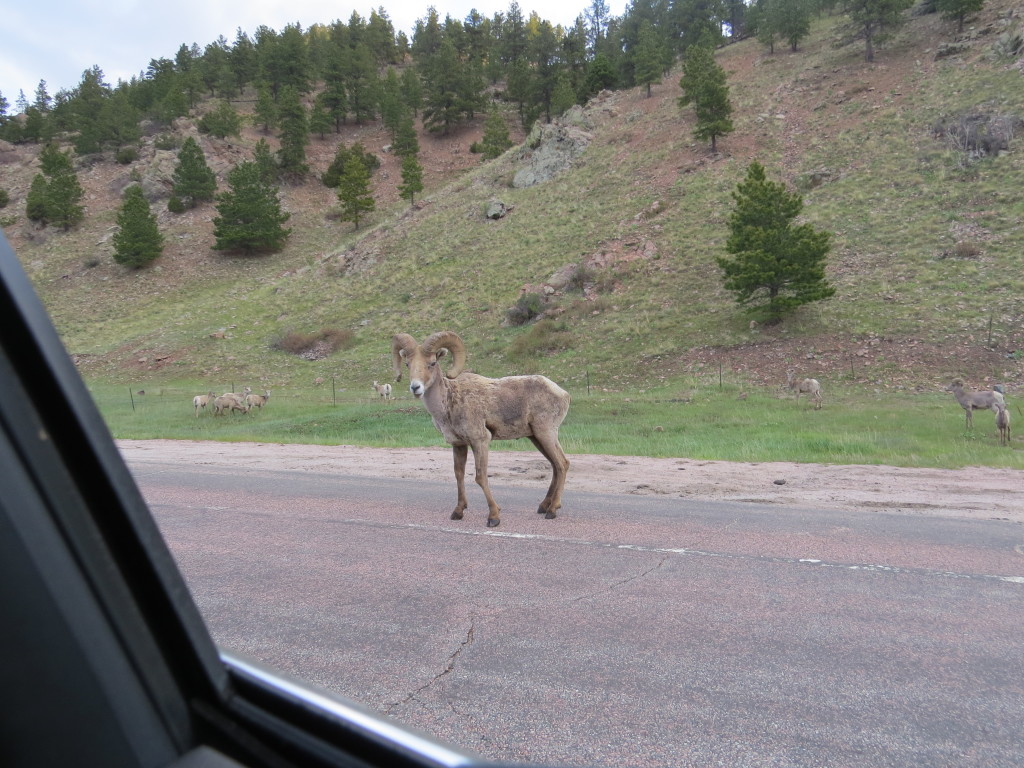 In all, there were 11 of them. I was surprised at how little they were. I suppose, though, they look much bigger when they are up on a mountain cliff.
In all, there were 11 of them. I was surprised at how little they were. I suppose, though, they look much bigger when they are up on a mountain cliff.
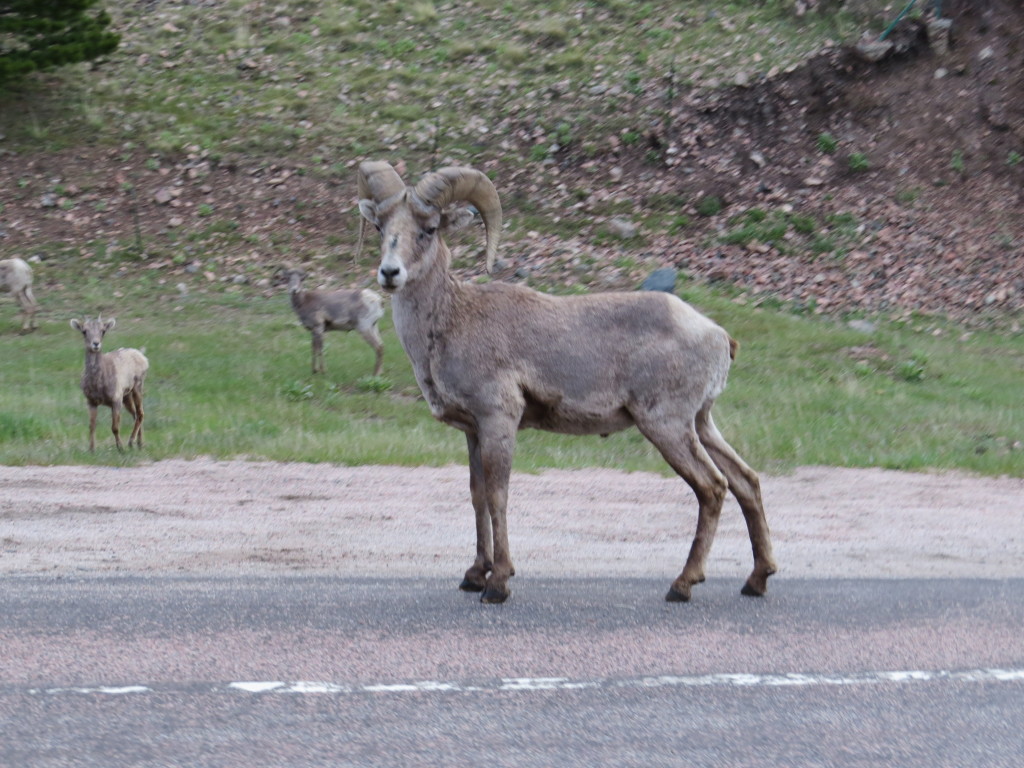
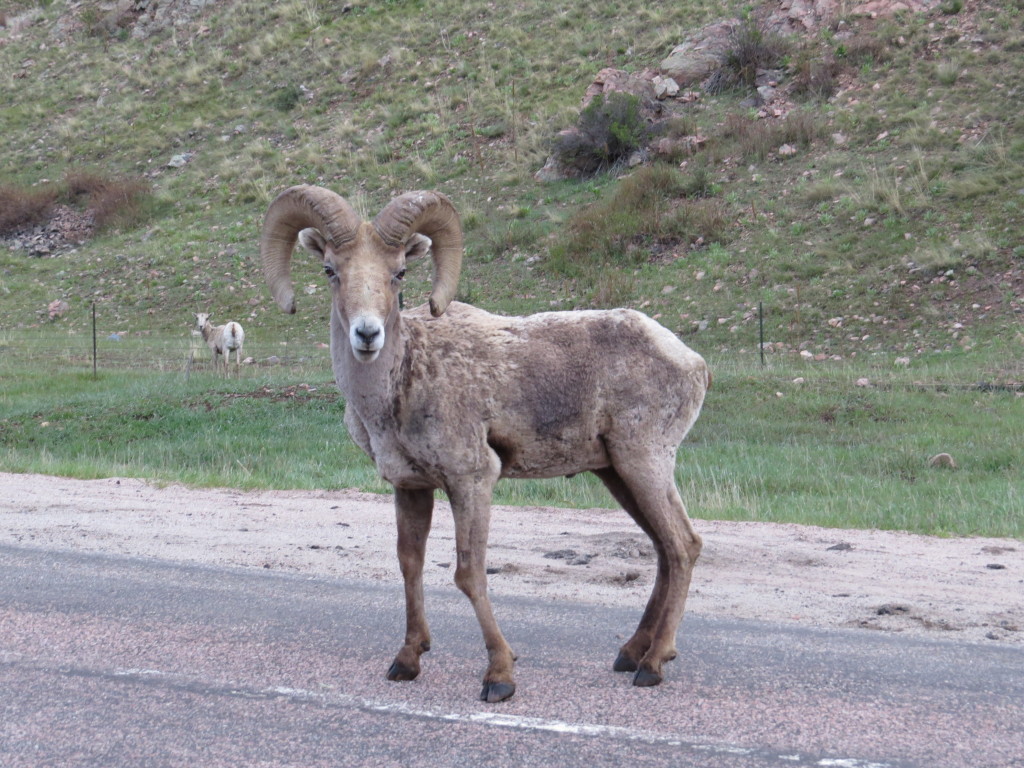 This was a very fun encounter once our hearts stopped racing. We completed the grand slam of big game mammals on our drive by also seeing a buck Pronghorn, three cow Elk, and a couple of Mule Deer.
This was a very fun encounter once our hearts stopped racing. We completed the grand slam of big game mammals on our drive by also seeing a buck Pronghorn, three cow Elk, and a couple of Mule Deer.
Once we got Karin to the airport, Jason and I had an hour-and-a-half to kill before we had to be at the airport ourselves. Guess what is right next door to Denver International Airport? Rocky Mountain Arsenal National Wildlife Refuge! It is a massive area and the perfect place to kill an hour. Stopping in at the visitor’s center, I saw Say’s Phoebes and Western Kingbirds and learned the best place to find Bullock’s Orioles in a short time frame. Additionally, the docent told us about a secret exit from the Refuge for getting back to the airport quickly. If you want to do some birding before your flight and are crunched for time like we were, stop in the visitors’ center and ask about this exit.
Jason and I went straight for the tree-lined 7th Ave. Most people head this way to see the resident Buffalo herd. That’s old hat for us. I was after a small, orange bird. As I scanned the Cottonwoods lining the road while we cruised, Black-billed Magpies could be seen periodically. We had seen quite a few on the trip, especially coming through Colorado Springs. The ones at Rocky Mountain Arsenal are skilled at doing Common Nighthawk impressions.
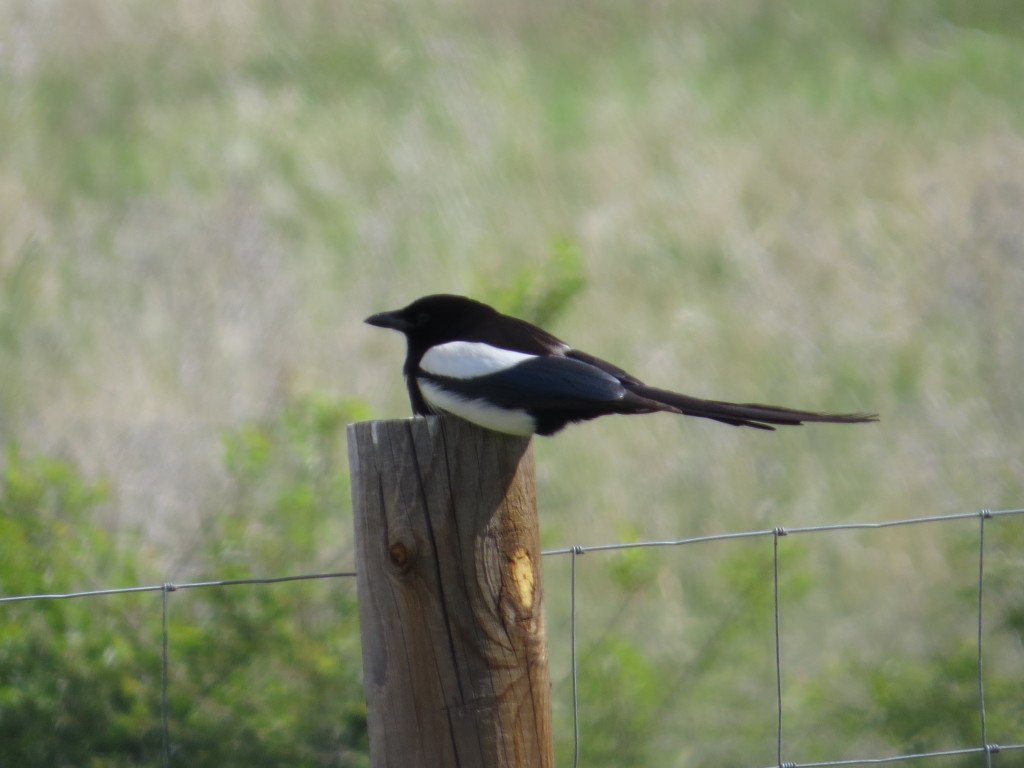
In no time I spotted the orange bird I was after and redeemed my initial sighting of the Bullock’s Oriole the day before. Success.
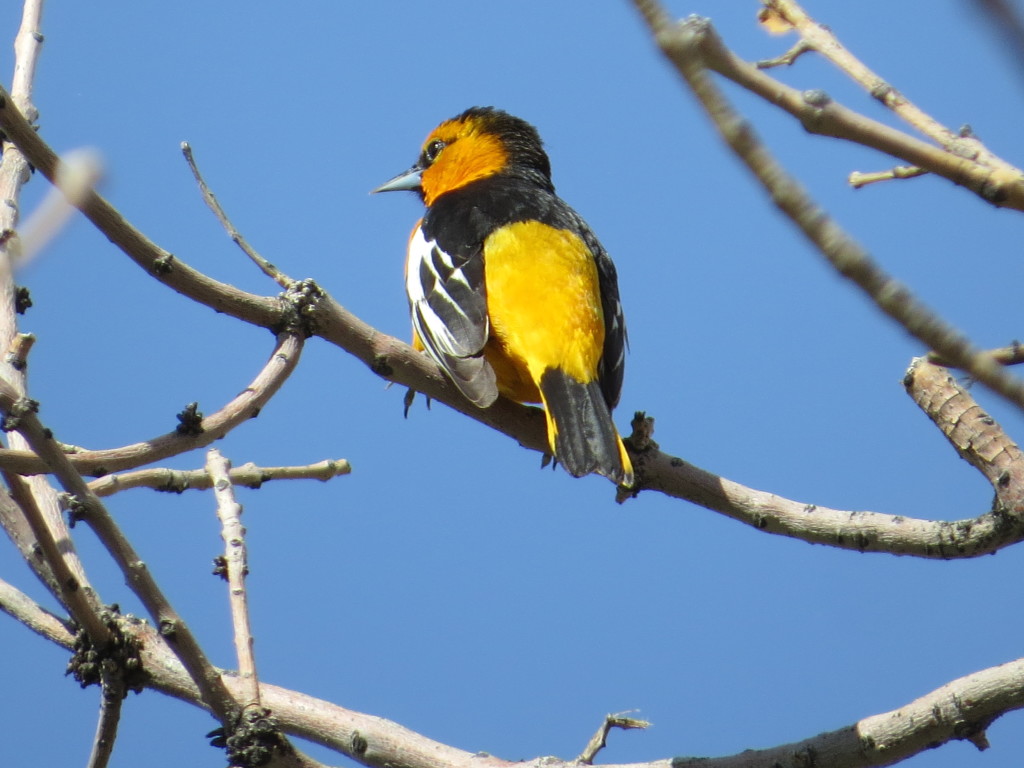
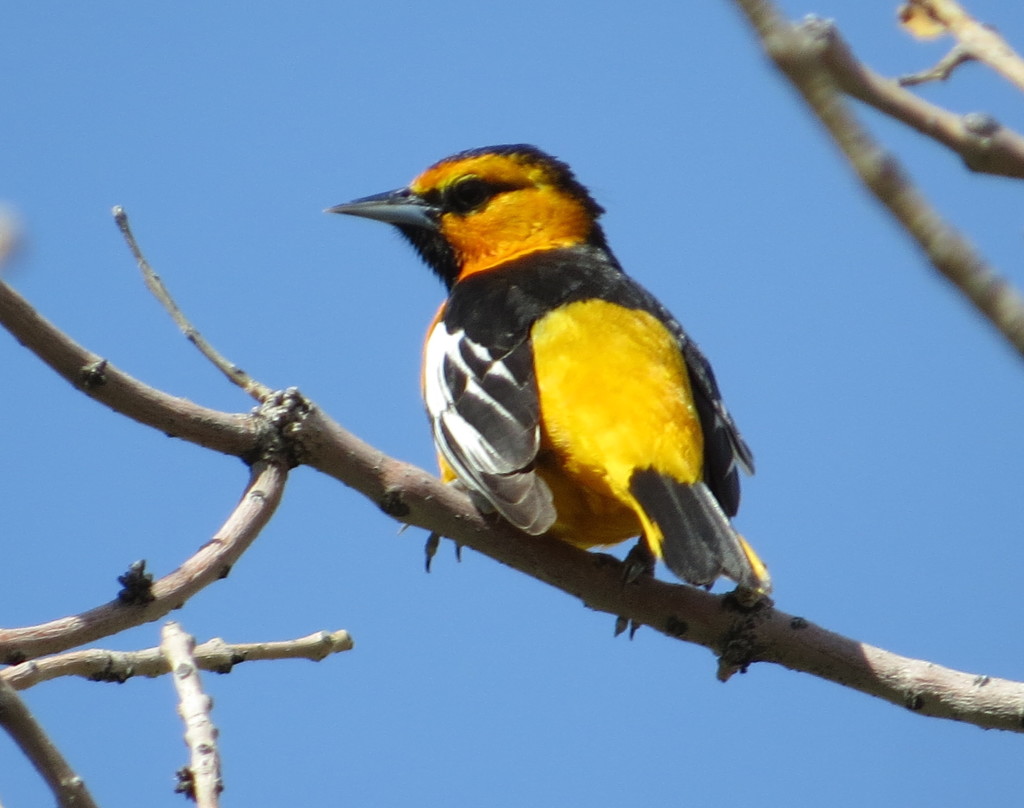
After a little bit more exploring, Jason and I took the secret exit out of the Refuge. And there on the exit road was a sad, symbolic reminder of the reason for our trip: a drake Mallard was standing vigil over his freshly killed mate. I’ve never seen anything like it.
You will always be in our hearts, Aunt Carol. We will miss you!
Common Tern
Sanderling
Hudsonian Godwit
White-eyed Vireo
Want Some Sauerkraut With That Vireo?
I had seen the report and dismissed it quickly. There was no way that a White-eyed Vireo would stick around long enough to chase it. Their presence in Minnesota during migration is ephemeral. Then I got a phone call a couple weeks ago that changed my thinking. Ron Erpelding, a locally-based 87-county lister, calls me whenever something good shows up within a reasonable distance from Willmar. Ron told me that he went to see the Vireo at Flandrau State Park in New Ulm a few days after the initial sighting and that it was singing up a storm. Hmmm. Could it be that this misplaced Vireo was trying to set up a territory for the summer?
The singing White-eyed Vireo was intriguing on its own. The location, though, was what pushed the decision to chase over the edge. New Ulm was only an hour-and-a-half away, but more importantly, it was the city where Melissa and I got our first teaching jobs. This chase would be a family affair and a chance for Melissa and I to revisit a beautiful place we called home for a few years and show the kids our first school, first house, etc. It’s always held a special place in our hearts.
Nestled in the scenic Minnesota River Valley, New Ulm boasts the highest per capita population of German descendents, and it shows. It is a town where the industriousness of its residents is showcased in well-kept, stately brick homes and perfectly landscaped yards (there is no bad part of town), and the love of beer and all things sausage is proclaimed everywhere. It is a town where you can (and I did) roll out the barrel. You name a season, and I’ll name a beer festival for that season. New Ulm is the only place in America, and this is no joke, where schools offer up vats of sauerkraut on hot dog day and the kids pile it on. Life is a continual party in New Ulm, and partying it up just upriver from the famed Schell’s Brewery was a little bird I wanted to see.
After a quick drive-by of the old house, we went straight to Flandrau State Park right in town on the Cottonwood River. There were other birders responding to the call and making the short hike along the river to the spot. One guy, Bill Marengo, was in the parking lot and told us the bird was indeed present this morning. Yes!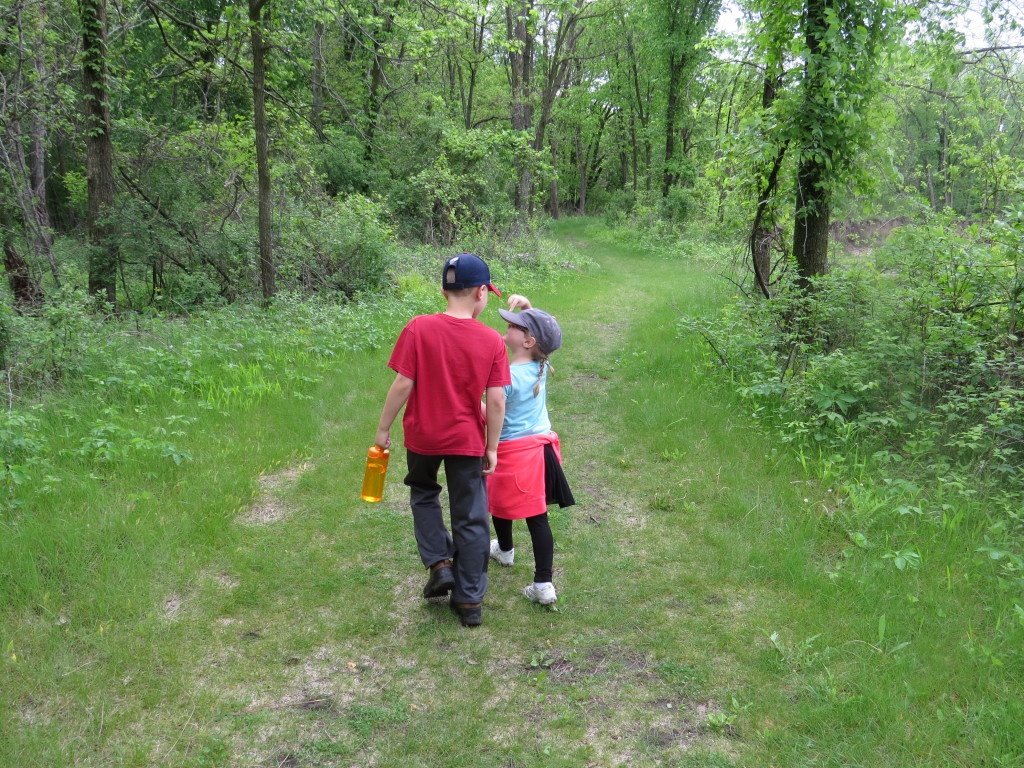 Getting to the scene a few hundred yards down the trail, I heard the bird immediately. Several birders and I strained to locate it. One lady claimed she saw it.
Getting to the scene a few hundred yards down the trail, I heard the bird immediately. Several birders and I strained to locate it. One lady claimed she saw it.
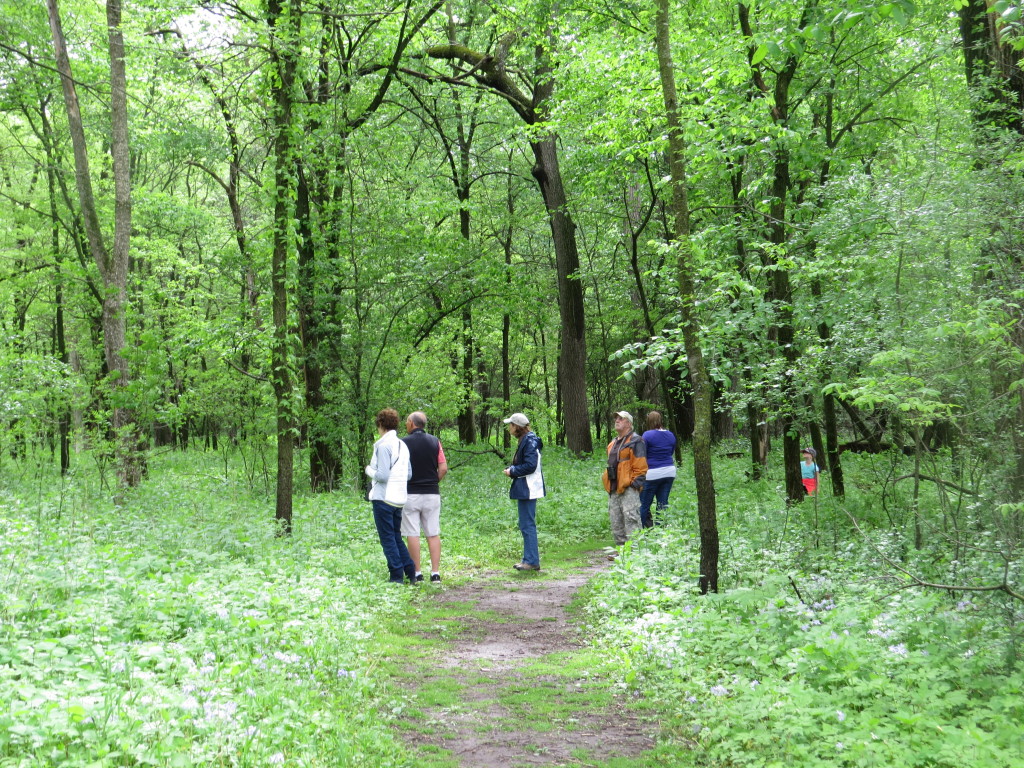
The rest of us didn’t. Then, we weren’t hearing it at all. After an hour or so, I decided to call it quits. You can only stare at the same trees for so long. Hiking back to the parking lot I checked my email and saw an eye-bulging report from the very same Bill Marengo with whom we had just spoken. He had made his way over the waste-water treatment ponds in nearby Sleepy Eye and found gobs of shorebirds–really good shorebirds. The trip went from being a downer to all the sudden being exciting again.
Once we were back at the car at Flandrau, there were some FOY Indigo Buntings to enjoy– a paltry, albeit lovely, consolation prize. The promise of some shorebird lifering was making up for any disappointment over the White-eyed Vireo.
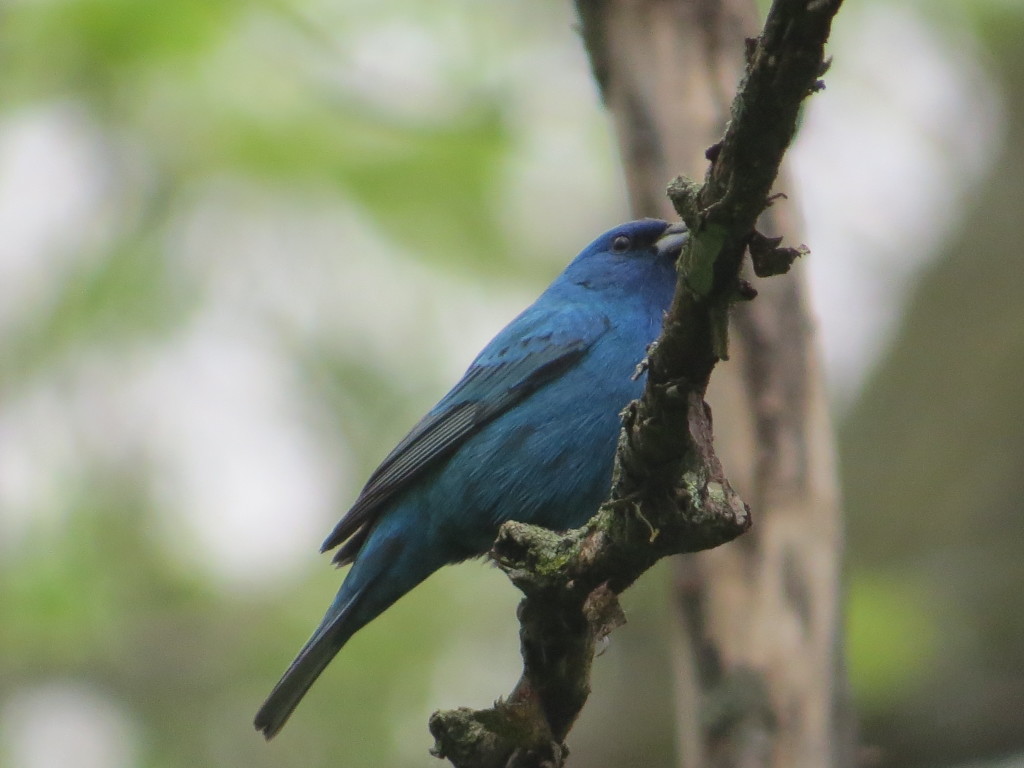 Before we left, I thought I heard the soft bee-buzzzz call of a Blue-winged Warbler. Nah, couldn’t be…
Before we left, I thought I heard the soft bee-buzzzz call of a Blue-winged Warbler. Nah, couldn’t be…
Even with a heard-only White-eyed Vireo and several potential lifers in Sleepy Eye, probably the best find of the day came when we stopped for a hot dog lunch at one of our old haunts, the Kwik Trip. (And yes, there was a huge tub of sauerkraut with the condiments). As we were leaving, who should we run into but our old neighbor and friend, Adam! The next half hour passed quickly as we reminisced, laughed, and caught up with Adam; I didn’t even have the usual anxiety when life birds are on the line.
Eventually we did part company and make the 15-minute drive to Sleepy Eye. Bill wasn’t kidding about the shorebirds. There were two main groups, each in different ponds and close to the entrance.
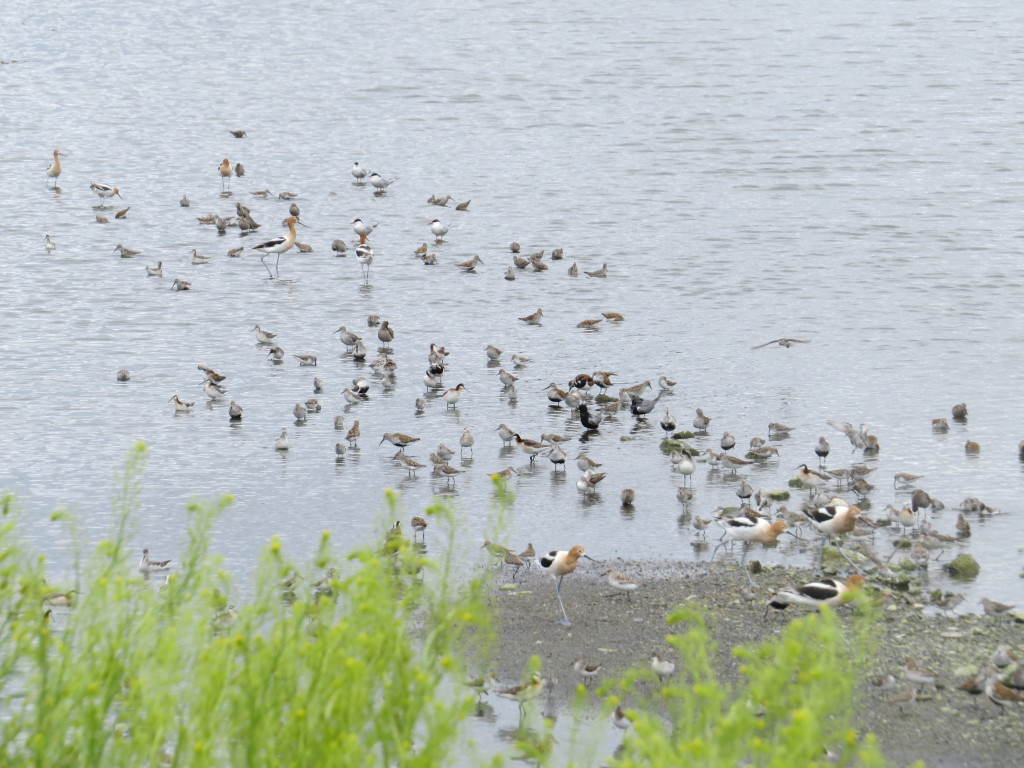

Birders who read this have probably already tried to sort through some of the goodies in these photos. When I was sorting through them in real life, I was looking for one, larger bird in particular that Bill reported–the Hudsonian Godwit.
Got it.
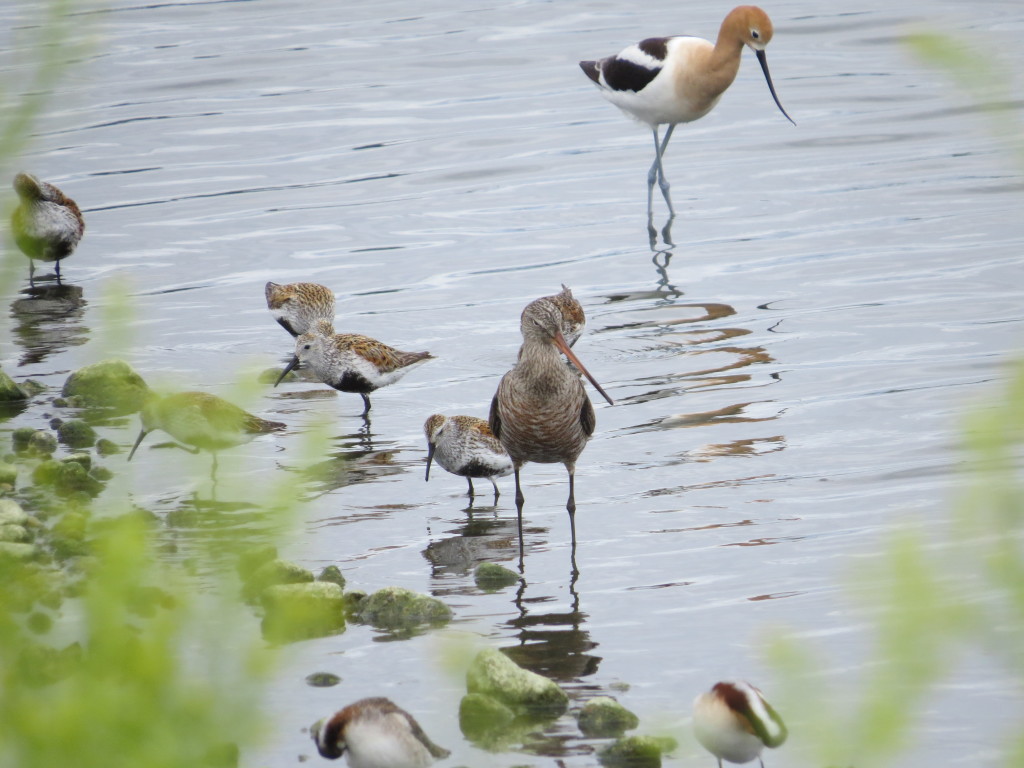
It was not the more striking male that I was hoping for, but when it comes to Hudwits, beggars can’t be choosers.
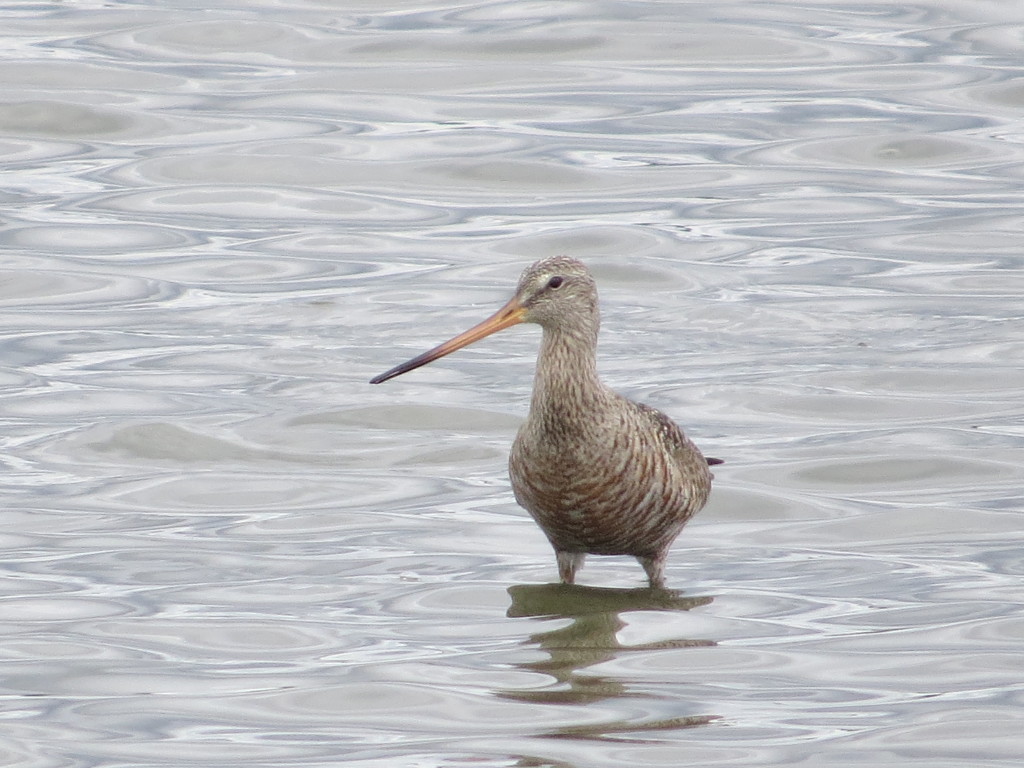
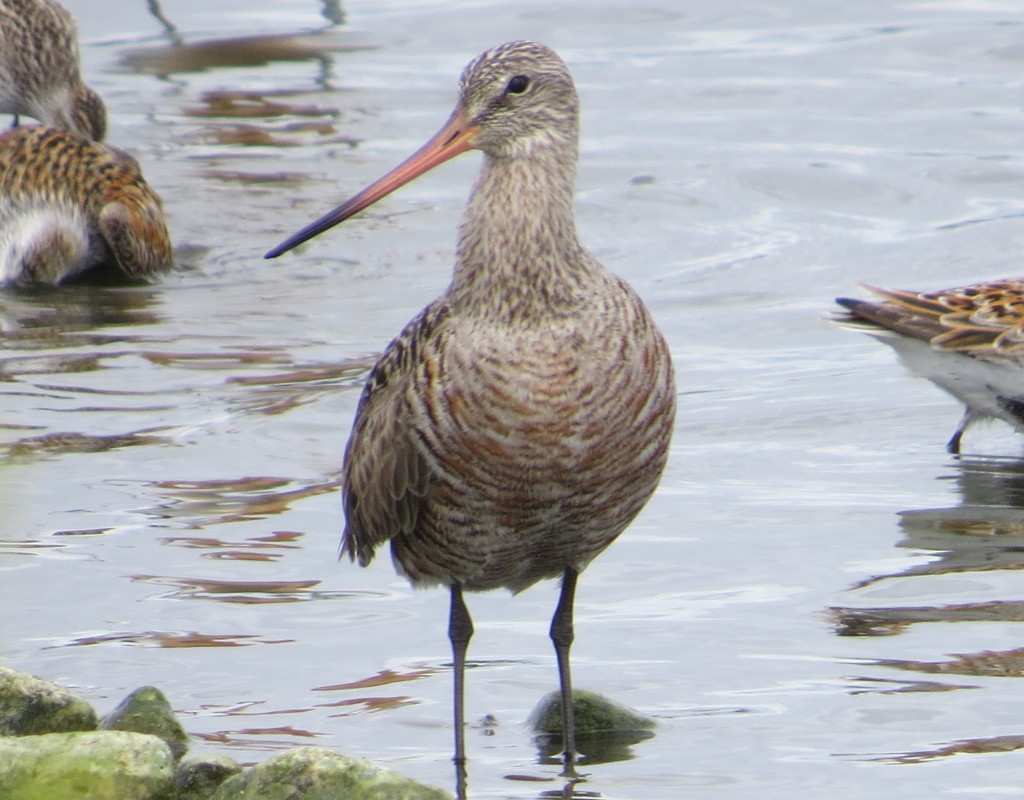
It was pretty sweet to pick up this unexpected life bird, but the fun didn’t stop there. Bill Marengo was still on the scene and helped me pick out a Sanderling lifer, even letting Evan and I get some good scope views. I was surprised by how plump they are and close in size to the Dunlin.
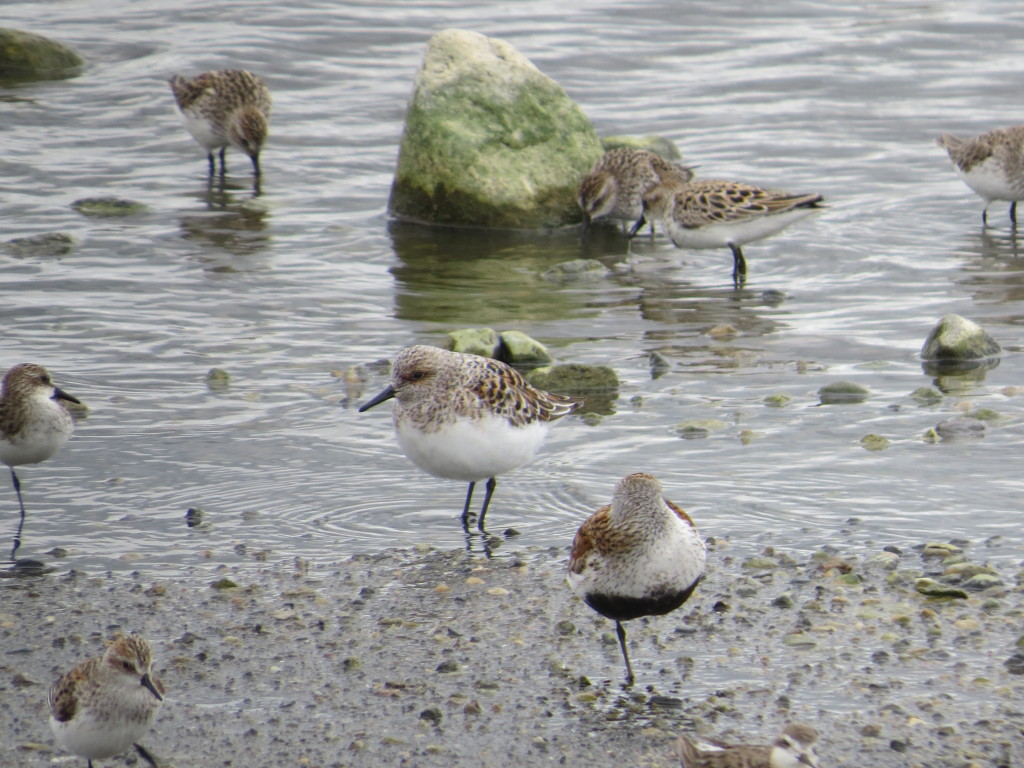
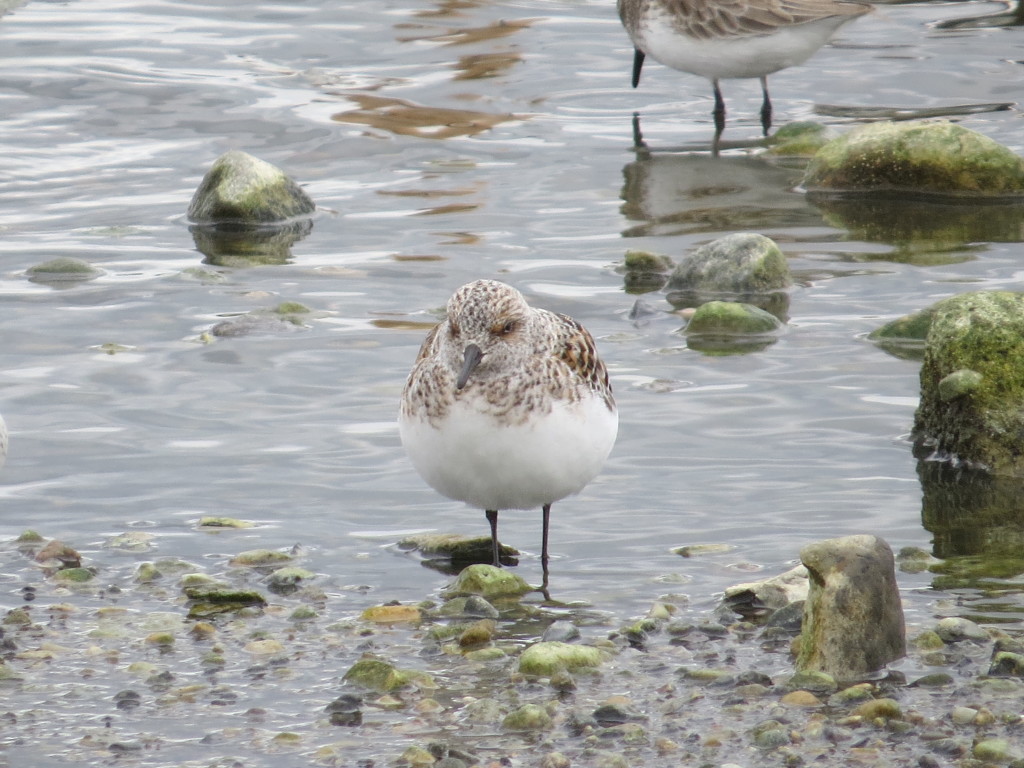 If two unplanned lifers weren’t enough, how about a third?! Several Terns caught my eye right away when we got to the ponds. Their bills looked excessively reddish and other clues were leading me to the conclusion that I was looking at Common Terns, which aren’t so common in Minnesota compared to the excessively common Forster’s Tern.
If two unplanned lifers weren’t enough, how about a third?! Several Terns caught my eye right away when we got to the ponds. Their bills looked excessively reddish and other clues were leading me to the conclusion that I was looking at Common Terns, which aren’t so common in Minnesota compared to the excessively common Forster’s Tern.
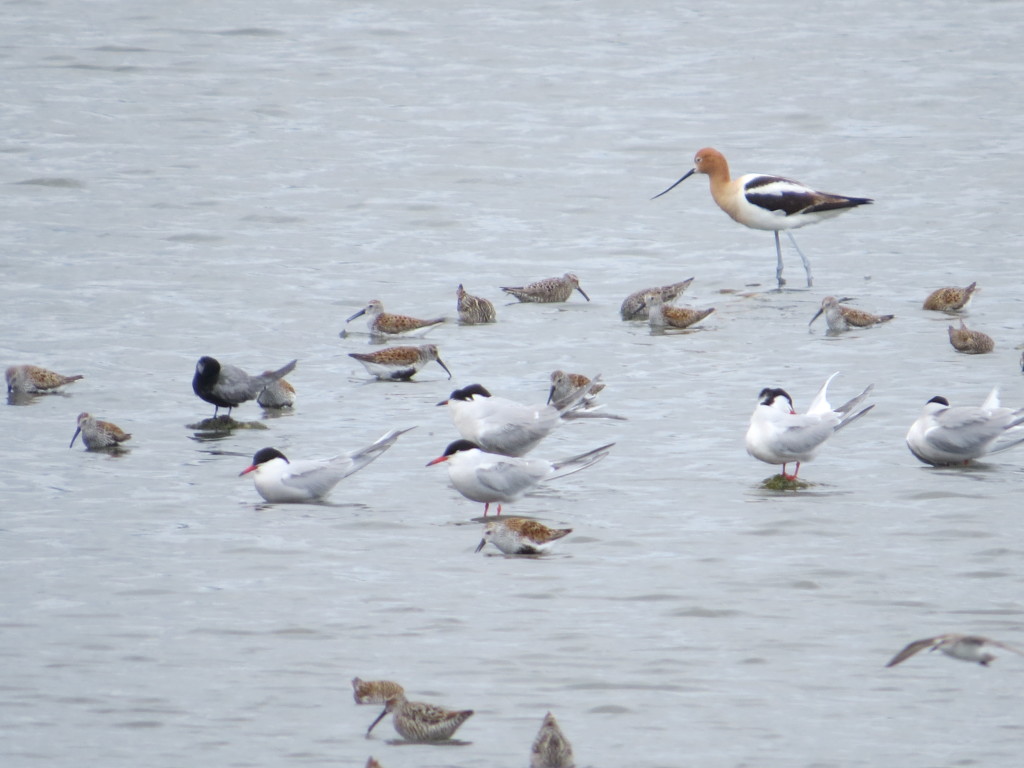 I spent much time agonizing over this ID after the fact as Common and Forster’s Terns are incredibly similar looking. Many hours were spent scouring images on Google, studying Sibley, etc. Common Terns have reddish-orange bills while Forster’s Terns have a straight-up orange color. The red really popped when I looked at these birds.
I spent much time agonizing over this ID after the fact as Common and Forster’s Terns are incredibly similar looking. Many hours were spent scouring images on Google, studying Sibley, etc. Common Terns have reddish-orange bills while Forster’s Terns have a straight-up orange color. The red really popped when I looked at these birds.
Another field mark of the Common Tern are the wings. The primaries of a Common are gray and flush with the tail while the primaries of the Forster’s are whitish or frosty and shorter than the much longer tail.
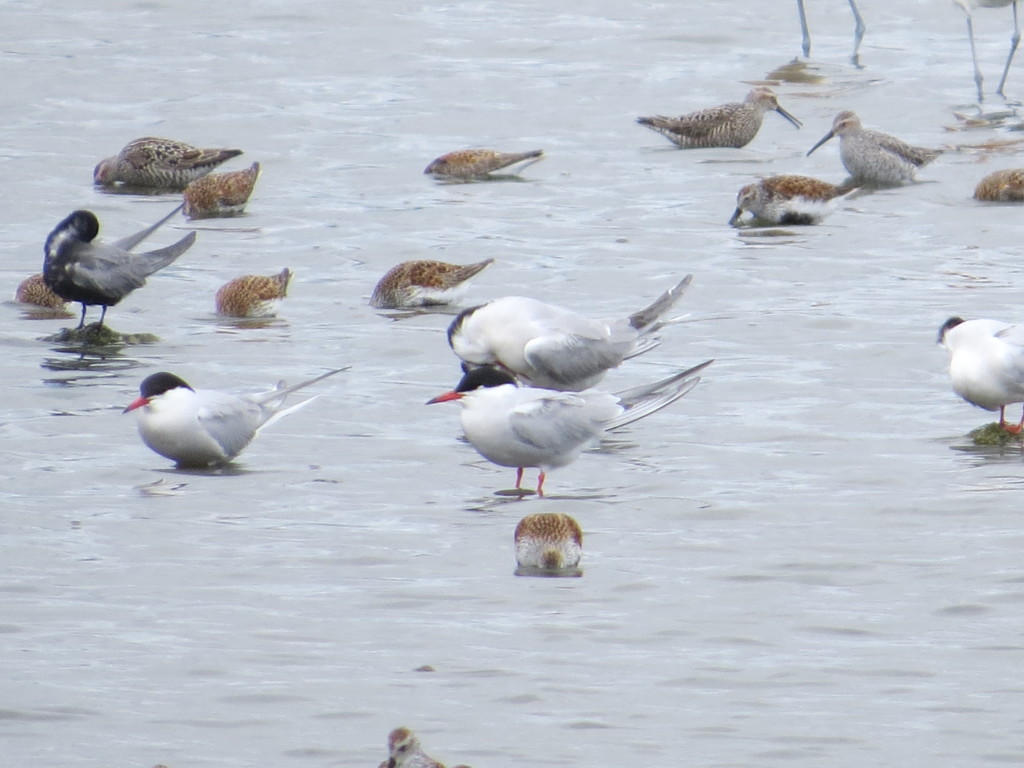
Finally, I found evidence of a remnant dark carpal bar which Common Terns have during the winter months before the black bar fades to gray.
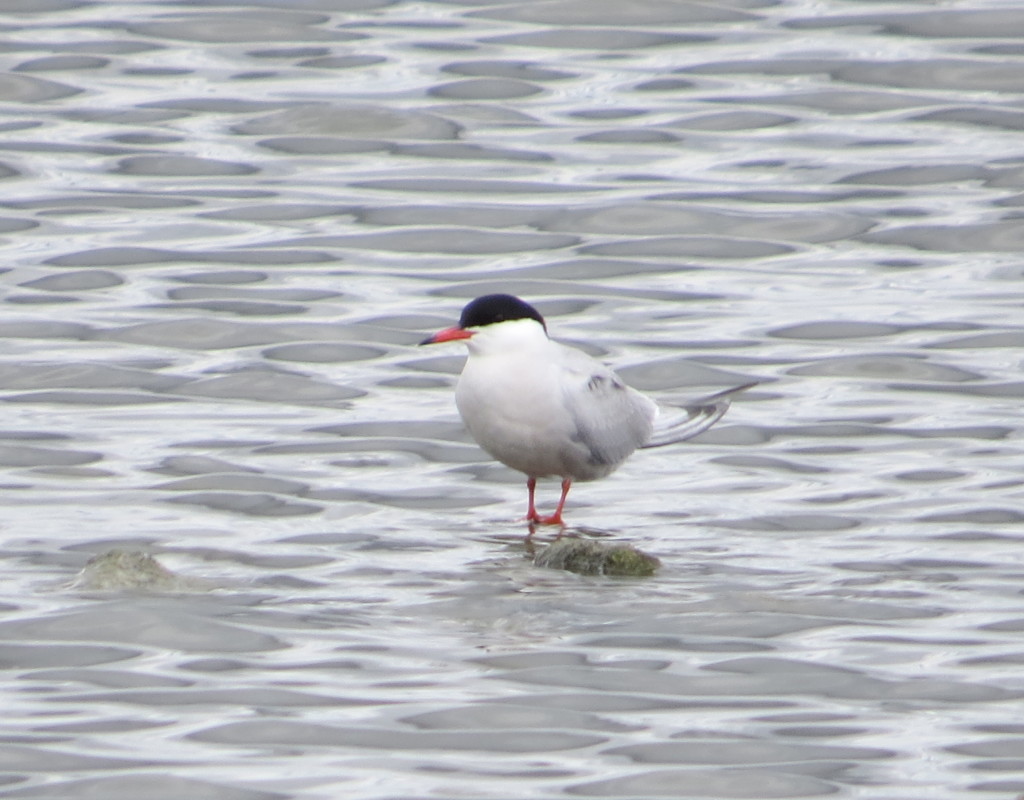
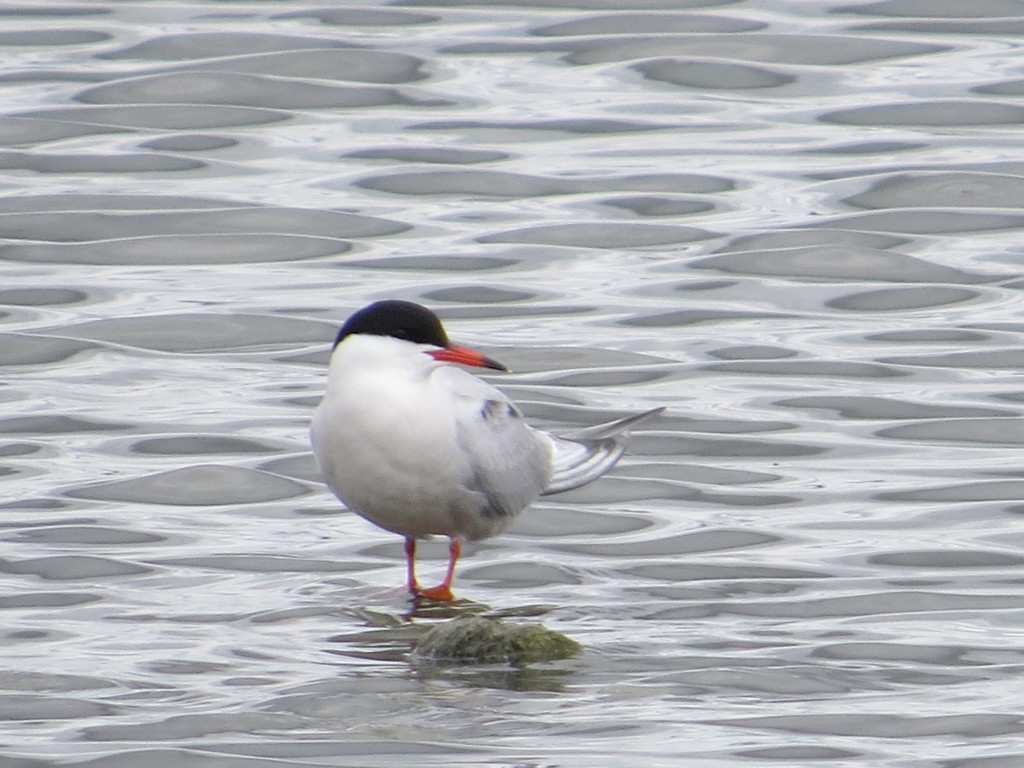
The birders among you have already detected some great shorebirds. American Avocets were plentiful with a dozen birds representing their species. This elegant bird is always a rare treat during migration in Minnesota.
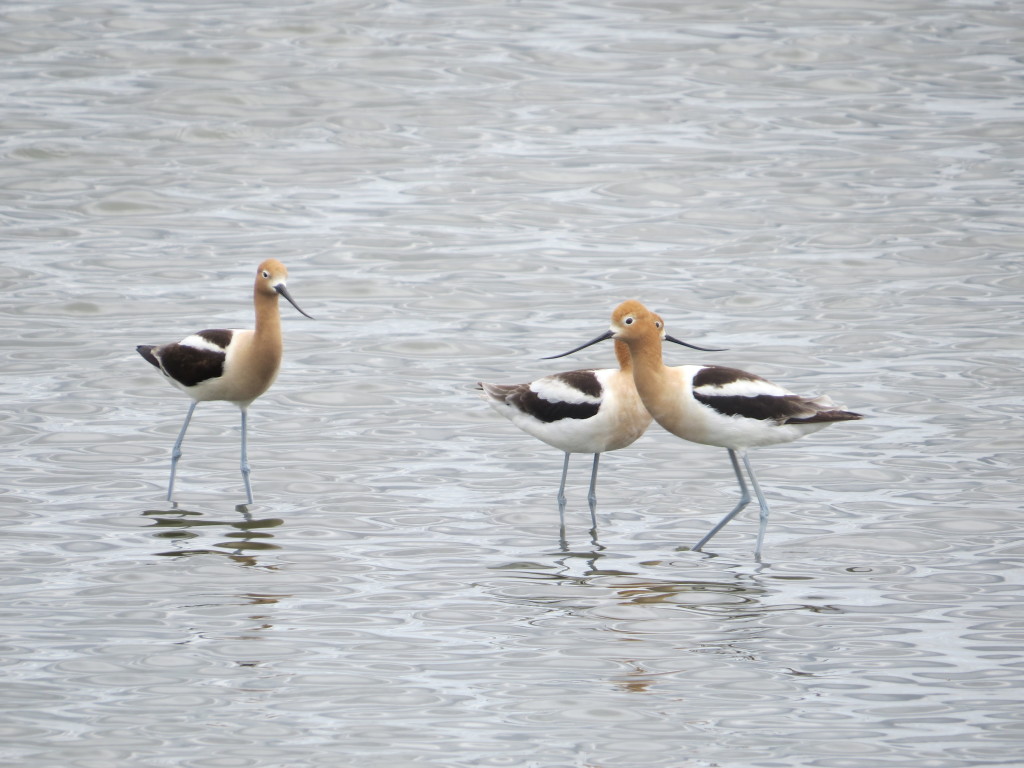
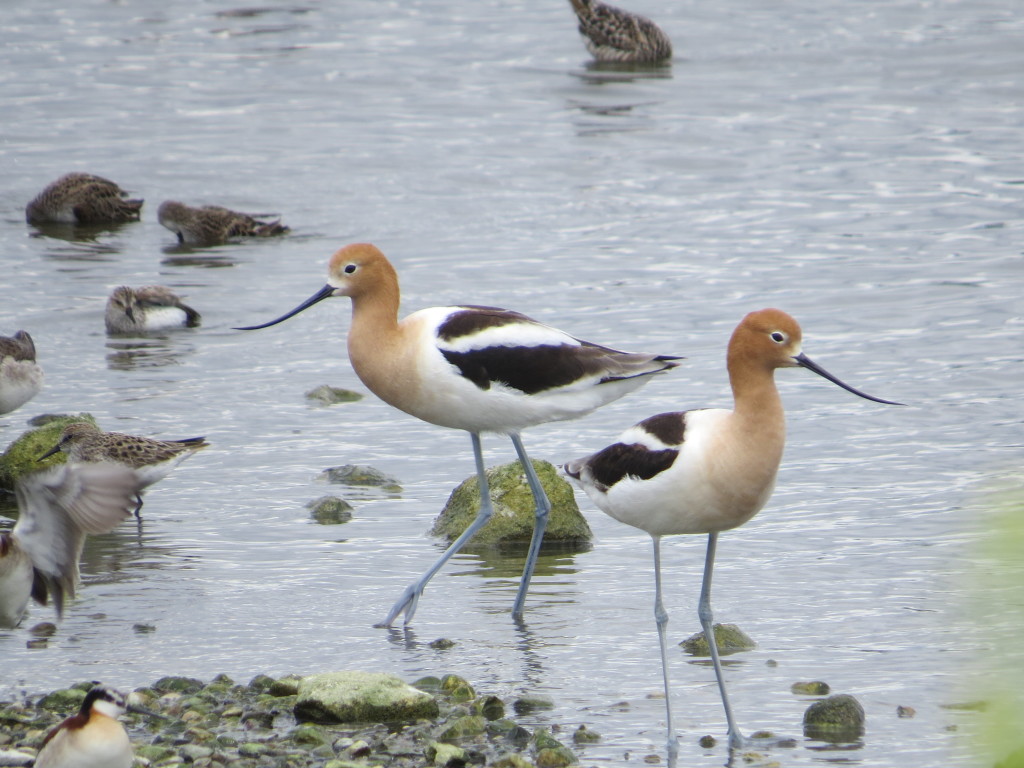
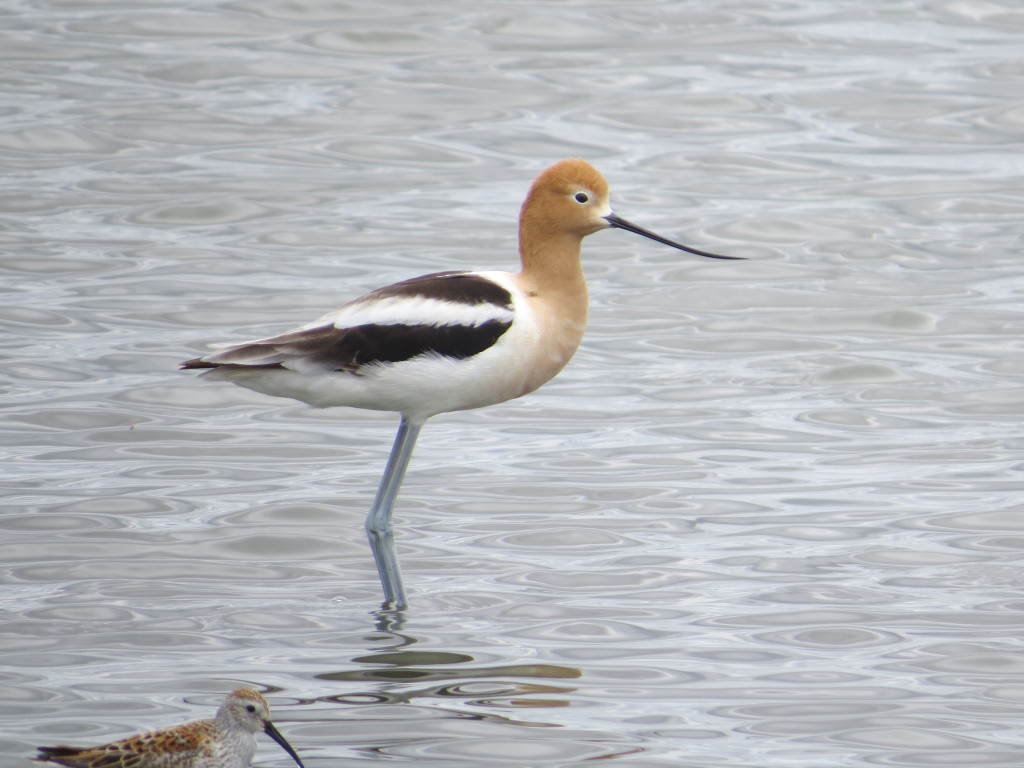
Black Terns are summer residents here, but it was nice to see one up close and still.
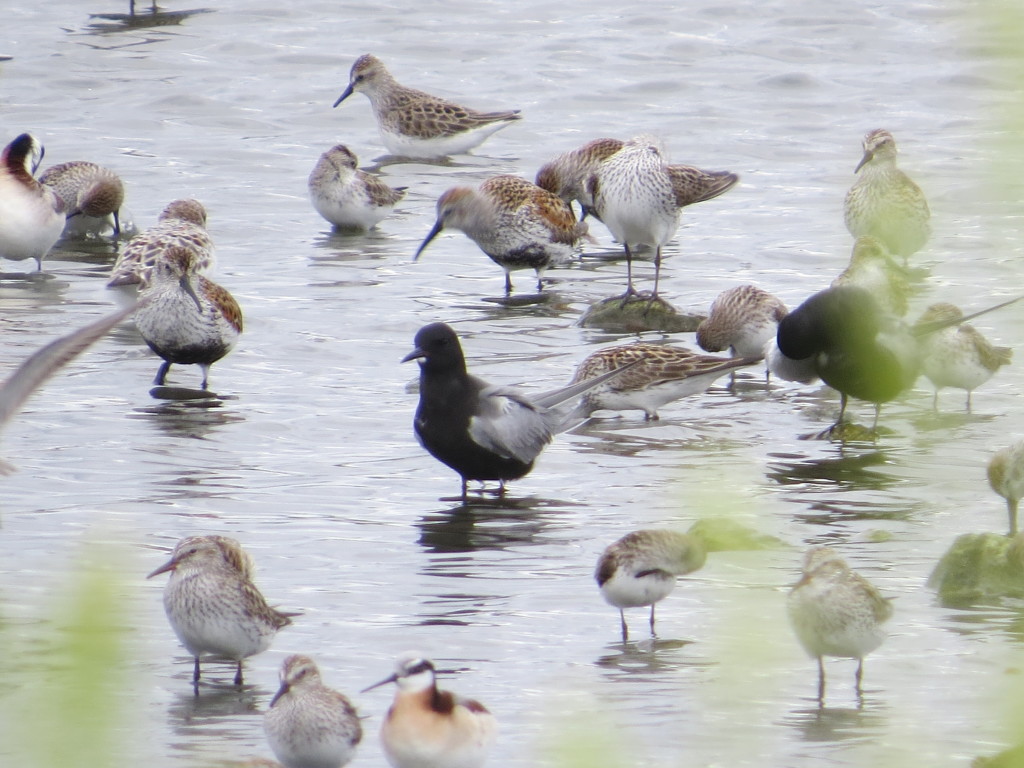 Dunlin were excessively plentiful and quite striking in full breeding plumage.
Dunlin were excessively plentiful and quite striking in full breeding plumage.
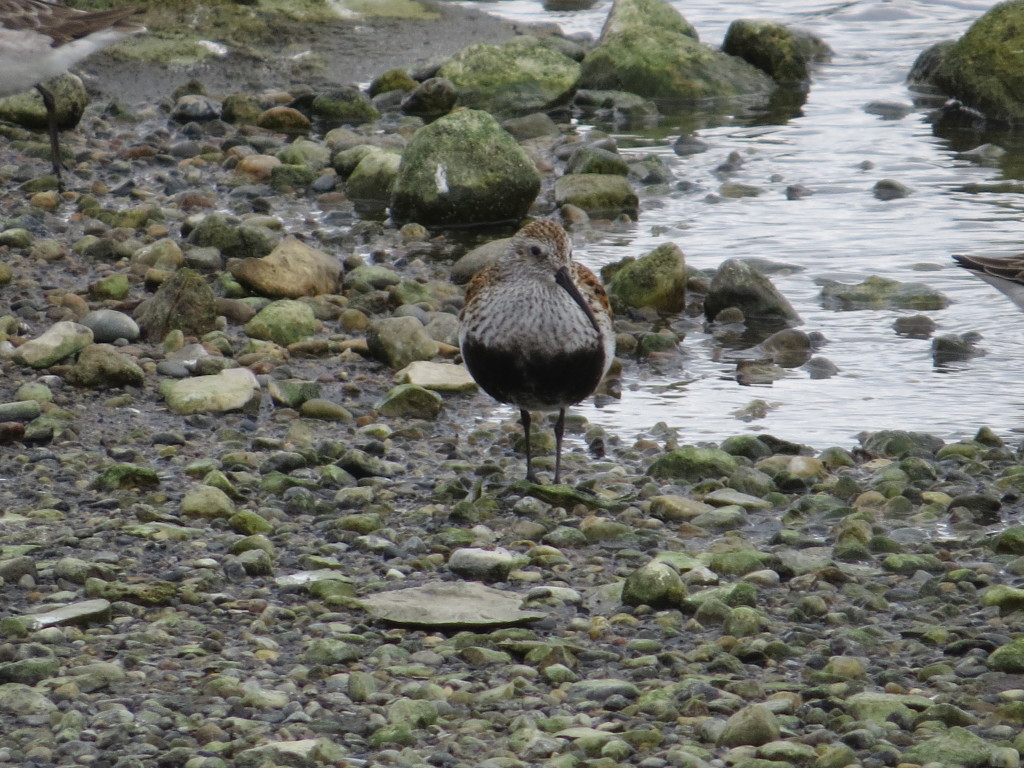
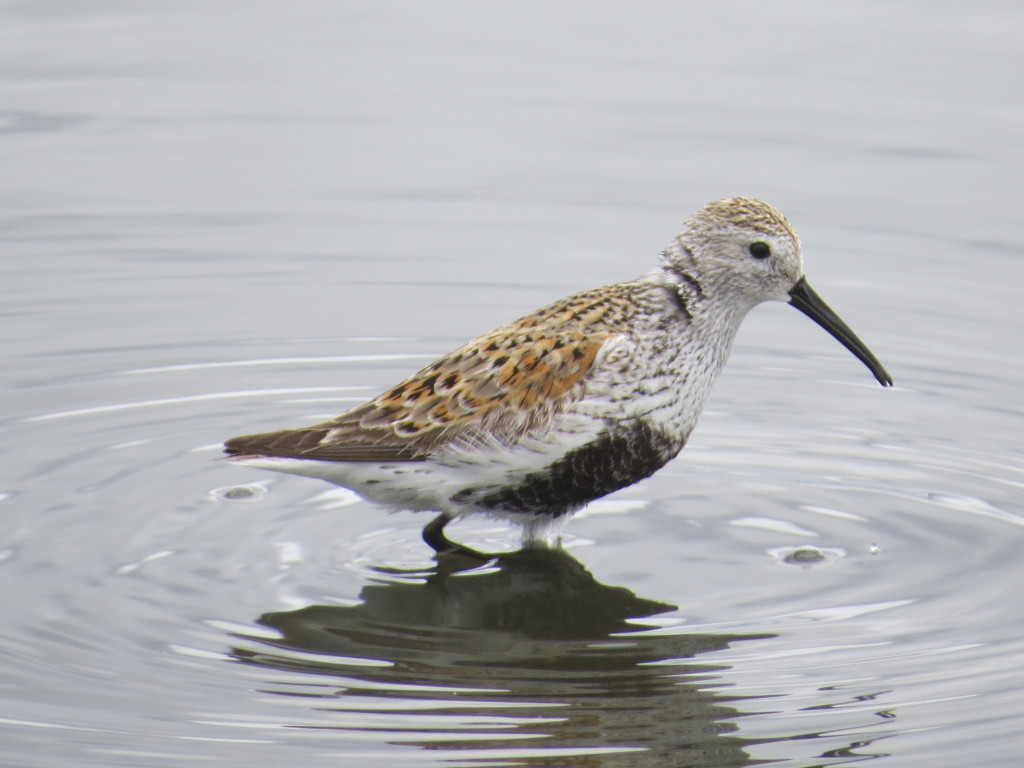
Stilt Sandpipers are also fun and handsome shorebirds.
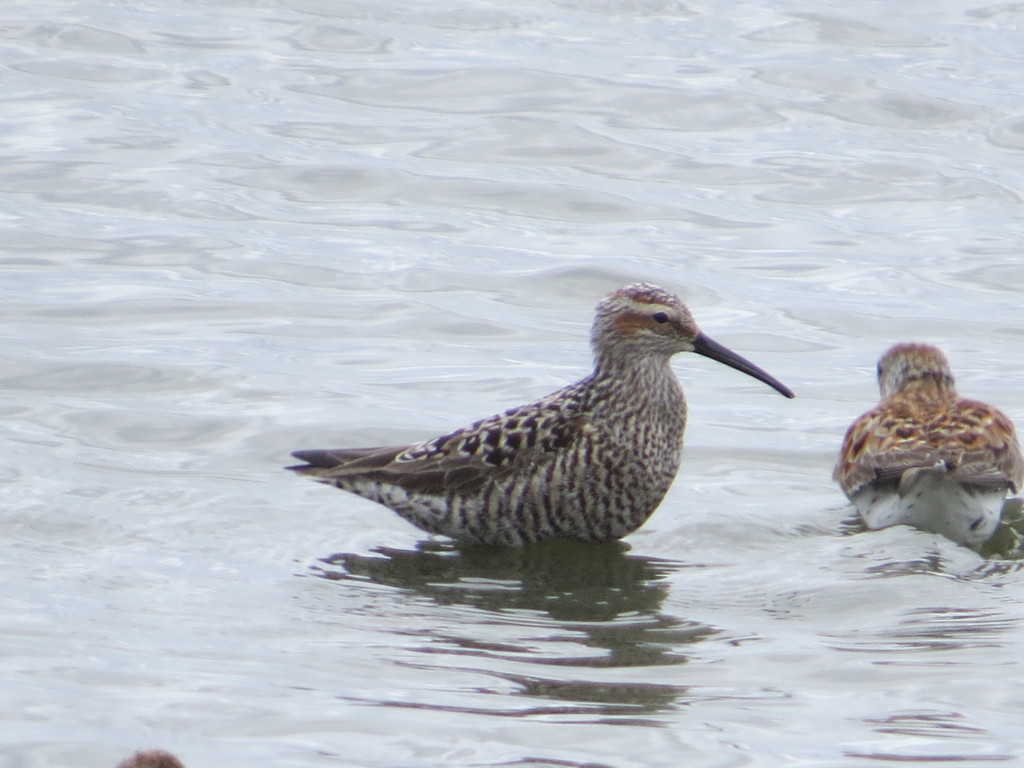
Another great addition to the shorebird mix were two Ruddy Turnstones, a crazily-patterned shorebird.
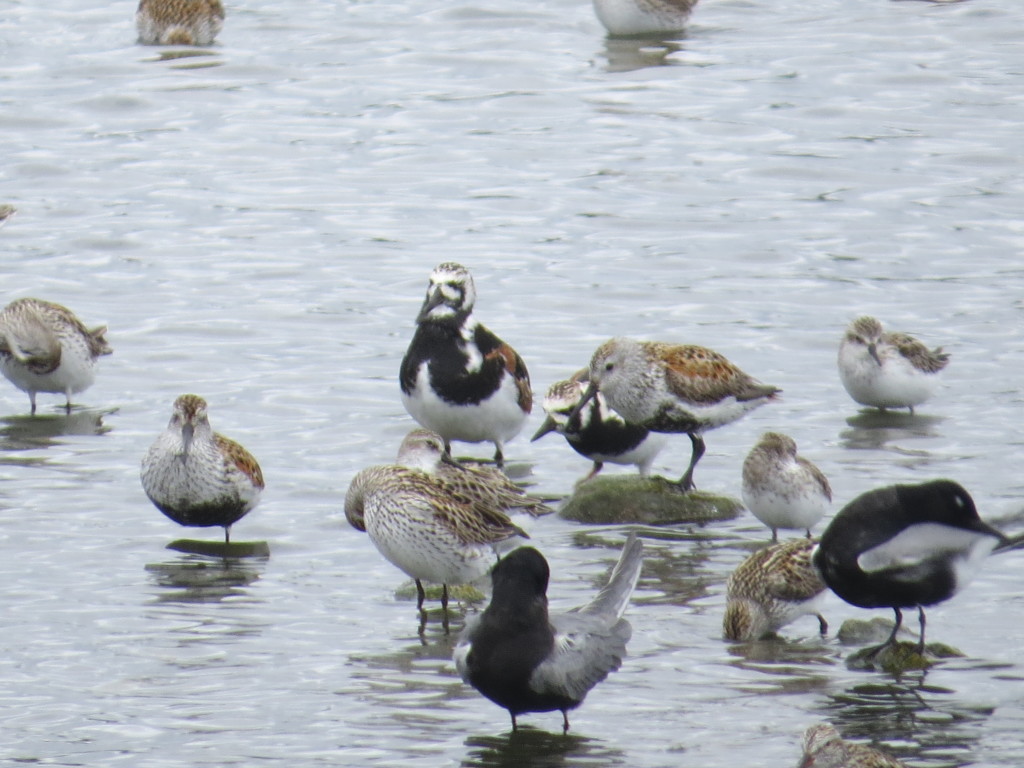 There was a lot going on with the shorebirds, both in numbers of birds and numbers of species. Wilson’s Phalaropes and White-rumped Sandpipers can be seen in my photos, but I didn’t focus any of my photography efforts on them. I probably could have spent hours photographing all these shorebirds, but I wanted to take another crack at that White-eyed Vireo and the day was already getting long for the non-birders. It was time to head back to New Ulm and hit the trail one last time.
There was a lot going on with the shorebirds, both in numbers of birds and numbers of species. Wilson’s Phalaropes and White-rumped Sandpipers can be seen in my photos, but I didn’t focus any of my photography efforts on them. I probably could have spent hours photographing all these shorebirds, but I wanted to take another crack at that White-eyed Vireo and the day was already getting long for the non-birders. It was time to head back to New Ulm and hit the trail one last time.
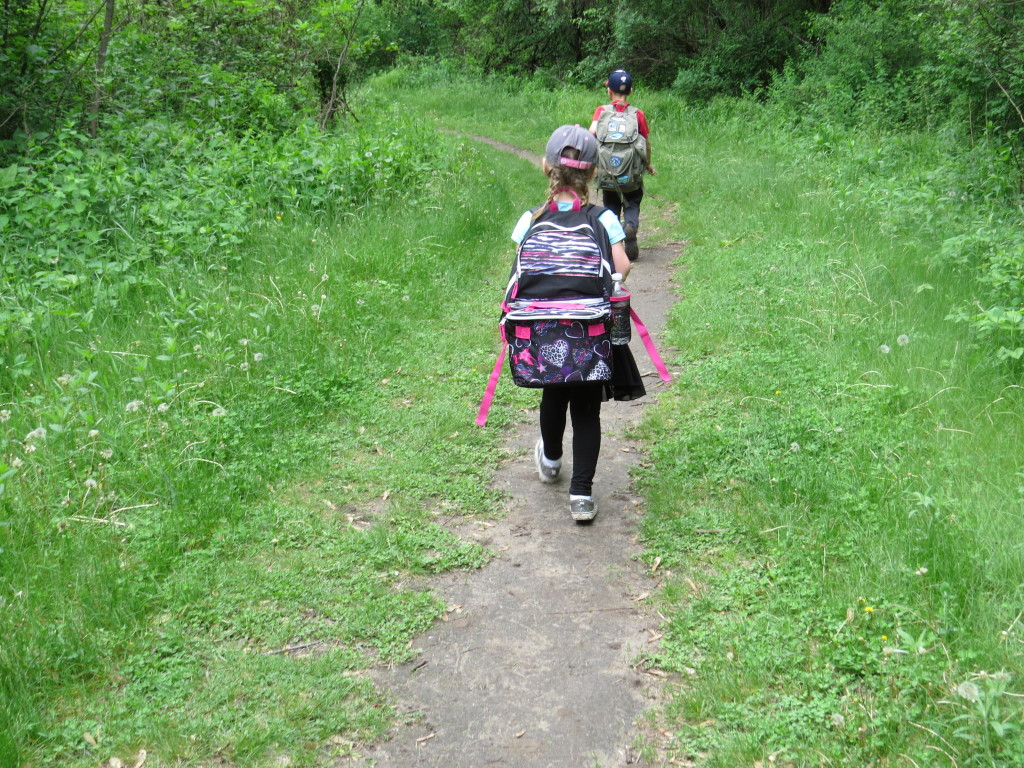
Joining us this time were Joel and Amanda Schmidt from back home. It didn’t take the six of us long to hear the White-eyed Vireo. Joel and I bushwhacked and tried to get on it, but we just couldn’t get a visual despite a valiant effort. I had to give up for real and make the painful decision to go ahead and count this bird as a lifer despite it being heard-only. I normally don’t like to do that, but exceptions sometimes need to be made for vagrant visitors of the Vireo variety. Precedence has already been set with my Bell’s Vireo lifer.
As we were about to part company with Joel and Amanda, we heard the soft bee-buzzz of a Blue-winged Warbler! I may not have been hearing things earlier after all! In no time we got some incredible looks at a Warbler I have only seen twice before.
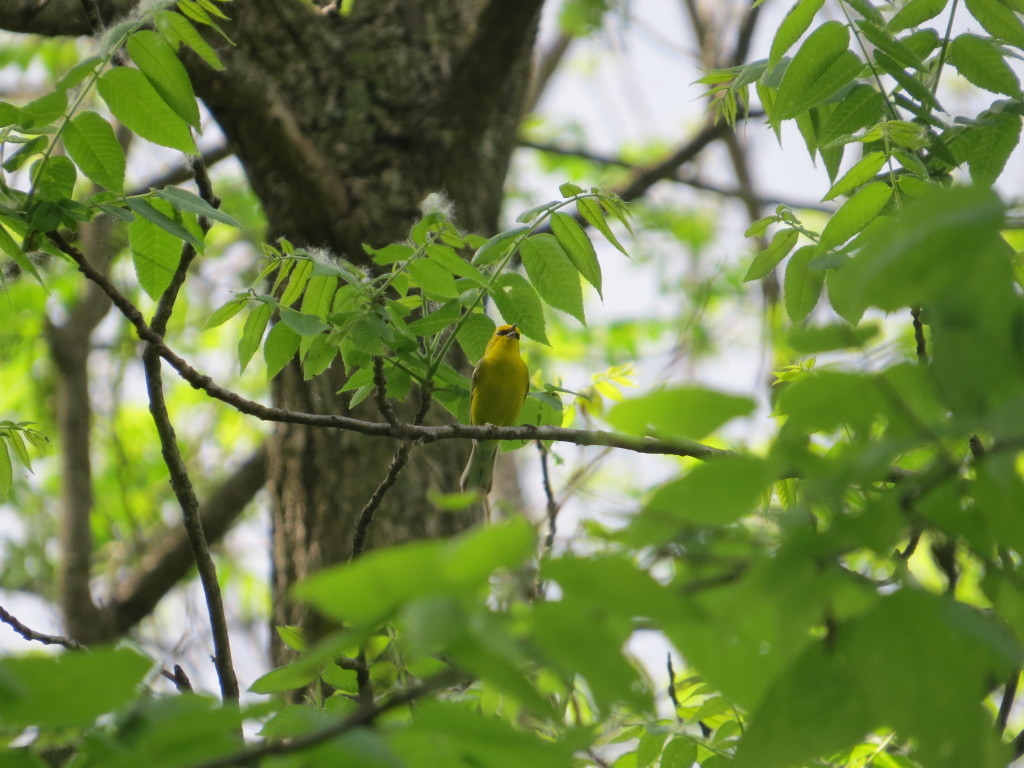
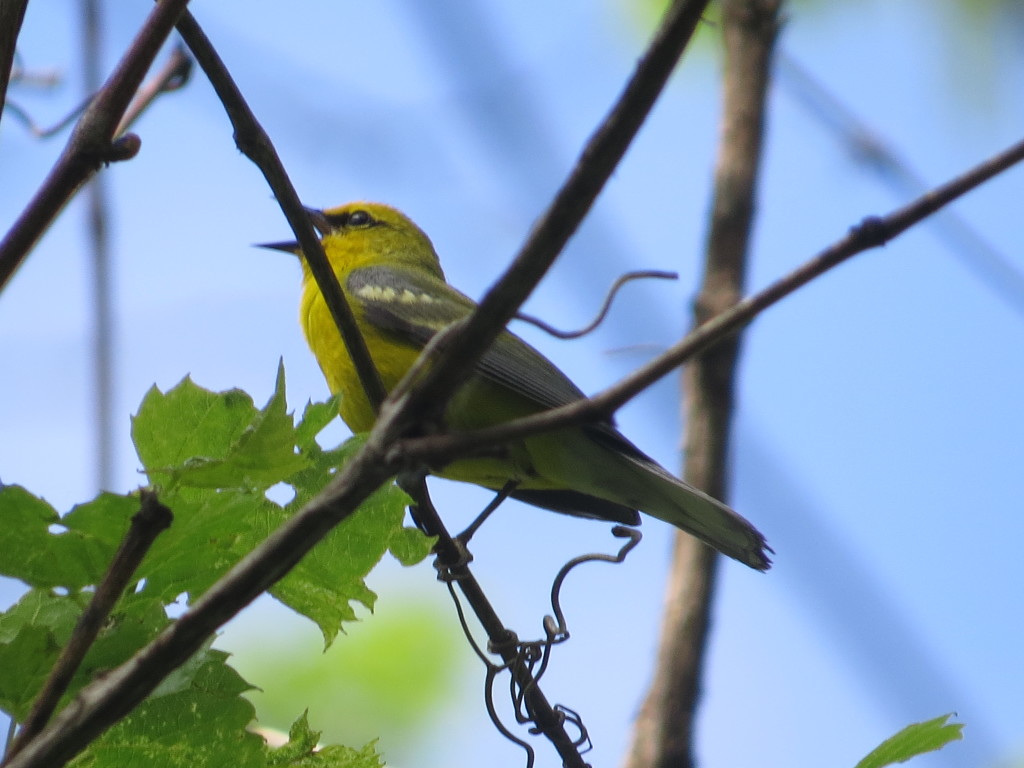 The Blue-winged Warbler was another great consolation prize in a day full of consolation goodies. It felt good to get better photos of this species.
The Blue-winged Warbler was another great consolation prize in a day full of consolation goodies. It felt good to get better photos of this species.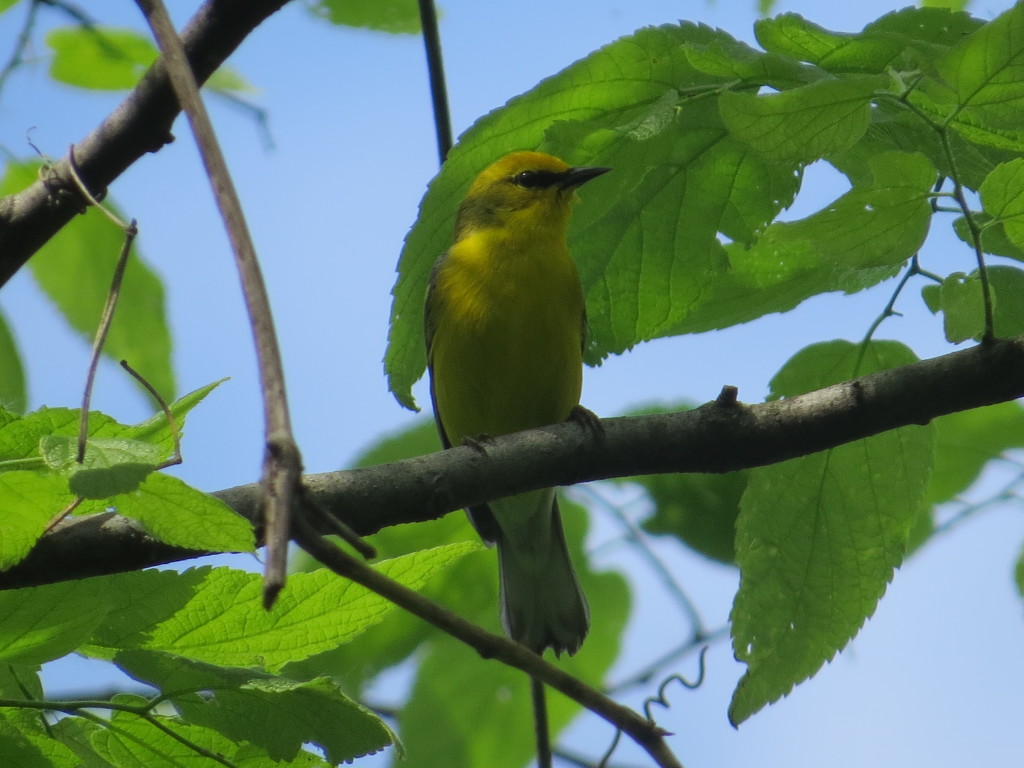 So, we went to see a White-eyed Vireo and failed in that regard. However, this day was an unimaginable lifer and FOY grab. Getting four lifers (WEVI, HUGO, SAND, COTE) in a day instate is unheard of at this stage in our birding. Topping it off with some incredible shorebirds like the Avocets and Turnstones as well as the Blue-winged Warbler really made for an exciting day back on our old stomping grounds.
So, we went to see a White-eyed Vireo and failed in that regard. However, this day was an unimaginable lifer and FOY grab. Getting four lifers (WEVI, HUGO, SAND, COTE) in a day instate is unheard of at this stage in our birding. Topping it off with some incredible shorebirds like the Avocets and Turnstones as well as the Blue-winged Warbler really made for an exciting day back on our old stomping grounds.
I’ve announced it before that there’s a lot more coming up, and even after such announcements, more incredible birding keeps happening. Now in addition to the Colorado birds and more recent lifers near home (one being nocturnal!), wait until you see WHO we went birding with and what we helped him find! Oh, and pretty soon we will be vacationing in Wisconsin’s Apostle Islands on the south shore of Lake Superior. We’ll see what comes of that. All I’ll say is that kayaks may be deployed; an endangered species may be had.
Caspian Tern
The County’s Tern for a Lifer
As I’ve mentioned in the previous post or two, it has not been my intention to push hard with the birding after the big trip West. I’ve been meaning to slow down to be able to take care of responsibilities and enjoy other aspects of life. Case in point was two weekends ago when Melissa and I decided to take the kids fishing. I even left my camera at home so I wouldn’t be distracted with the birds. Maybe, though, this was actually a selfish move because not having my camera pretty much guaranteed something would go down. And that something wasn’t the bobber. Fishing was lousy. I could have just as well been birding or fishing–I had left my own pole at home thinking I’d be swamped with baiting three hooks, taking fish off three lines, etc (Grow up and help me out, Evan!!).
After trying Elkhorn Lake, we ventured up to the outflow at the northeast corner of Green Lake where people were fishing from shore. While we were once again waiting for bobbers to go down, I had noticed some large, white birds flying in the distance. Those are odd-looking Gulls, I thought. They seemed really big, but their heads and bills were too small to be Pelicans. Hmmph, no long-range optics. Oh well.
Later on we were driving by the area where these “Gulls” had been, and I noticed some larger white birds resting in the backwaters off the Green Lake outflow. Now I didn’t have my camera with the zoom capabilities, but I did have a pair of binoculars in the car–I always have pairs of them floating around both vehicles. I pulled the car over and took a look. I had to chuckle when I realized I was seeing a life bird when I never even intended to go birding. Life birds are hard to come by these days in the state, let alone the county. Getting a new one at home is a now a very rare treat. Moreover, the bird I was looking at was one I’ve been waiting to see for quite some time. It is one that is so exotic in name and looks that I was amazed when I first learned it could be seen in Minnesota–the Caspian Tern. There were four of these large beauties (bigger than Mallards). And I didn’t have my camera…
I asked Evan if he wanted to look through the binoculars to get a better look at the Caspians to which he responded, “What, are they those white things over there? No, I’m good.” Evan has always been fine with just a check mark for his life list. Not me. After I brought the family home, I made the 20 min. trip back so I could document this lifer.
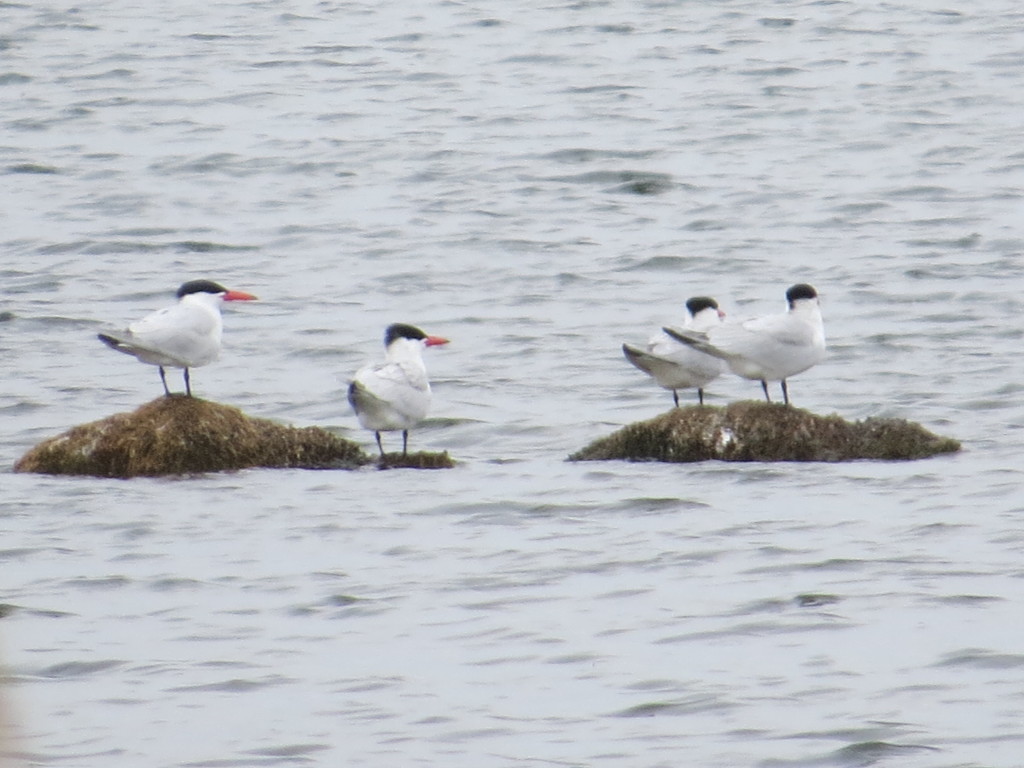
The Caspian Terns are so cool that when they’re in town, everyone has to get their photo taken with them.
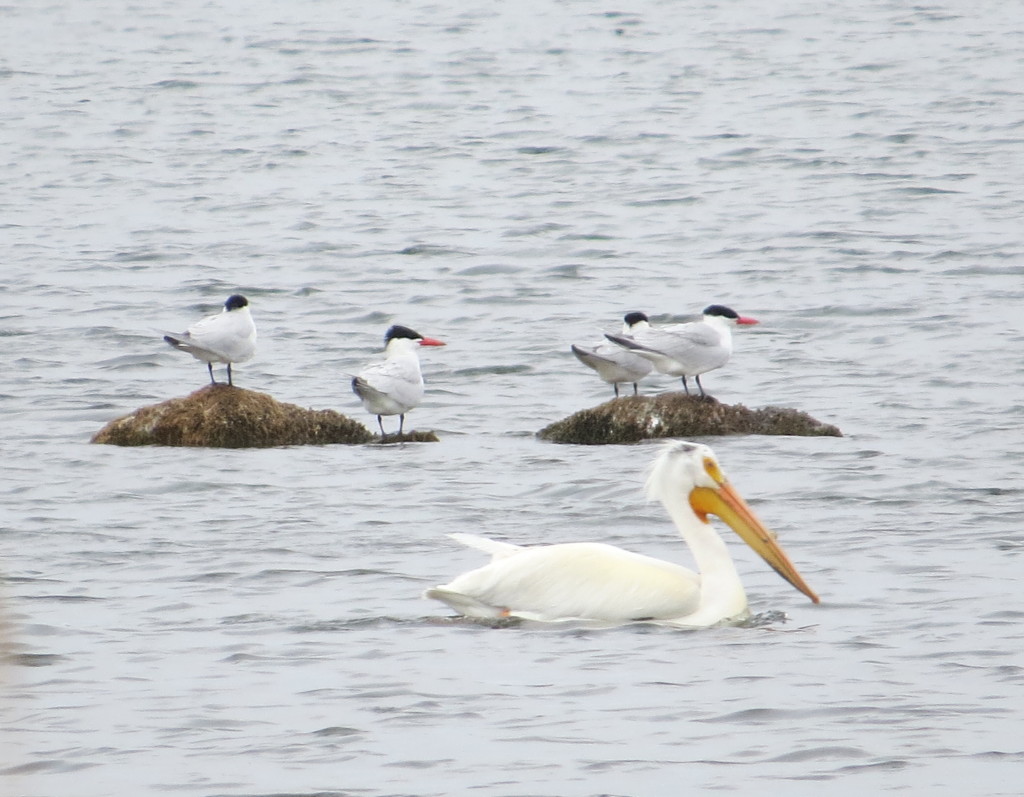
Even the COLO is not too coolo to become a bit of a xenophile around these visiting birds, posing for pictures with them and checking out the competition for best-looking water bird.
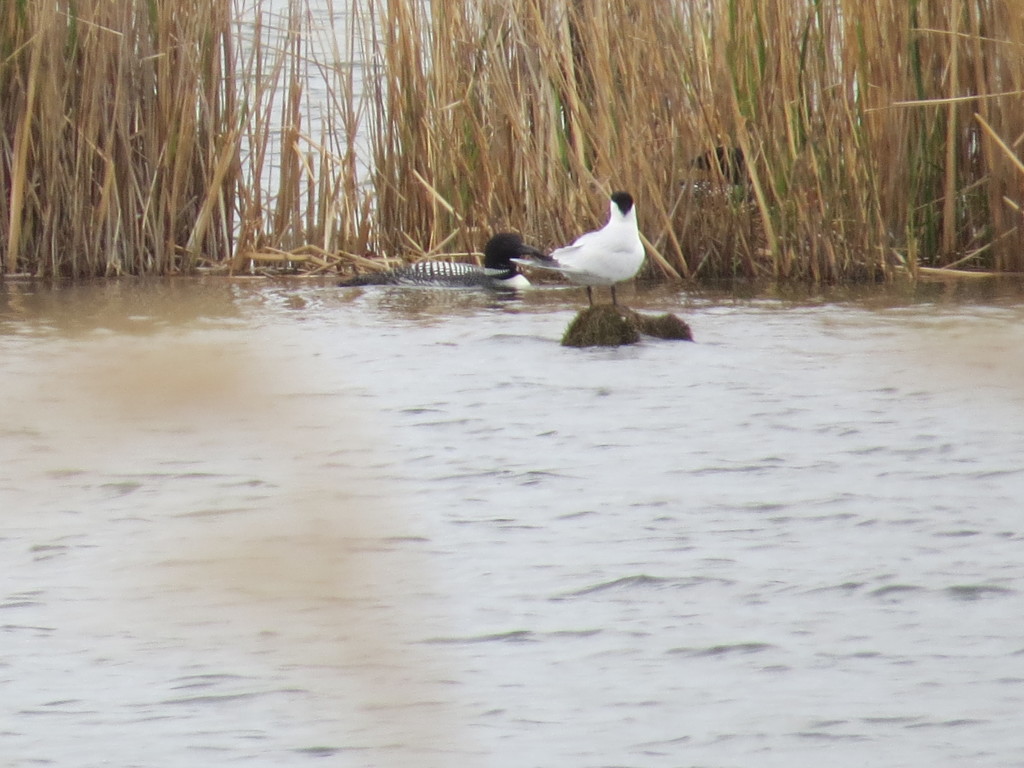
Keep on swimming, Chuck. You’re just a ‘common’, domestically-named bird; I, on the other hand, am exquisite.
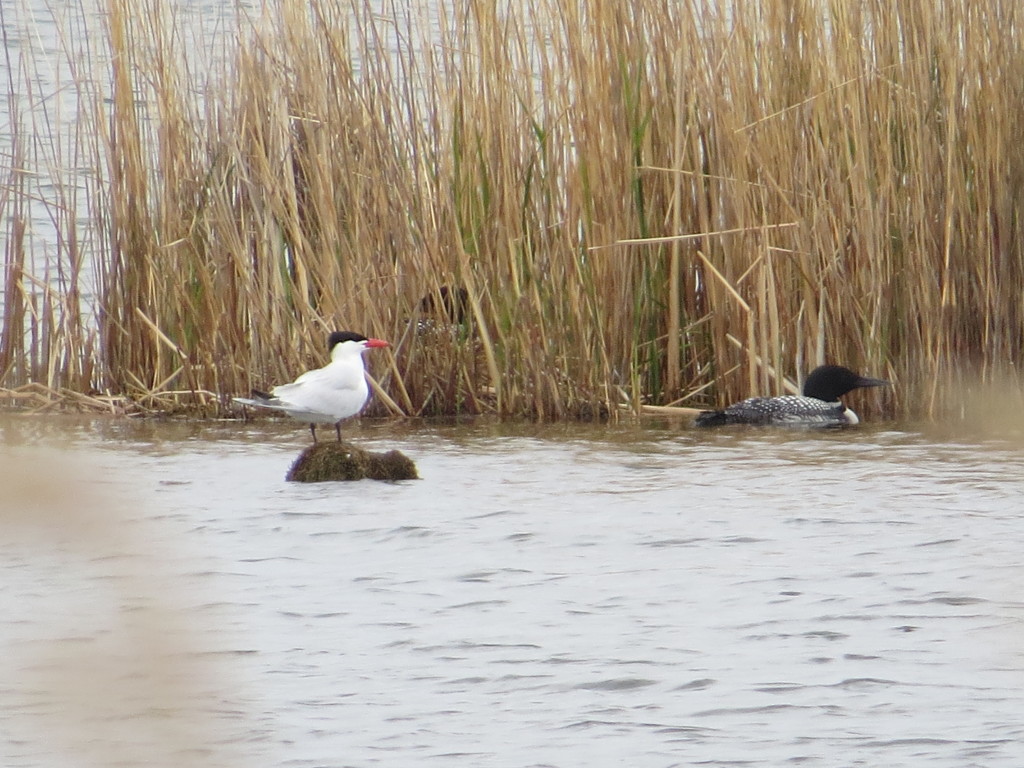
Wait, did you see it? I know my birder friends saw it. I didn’t see it until I looked at my pictures. Just to the right of the Caspian Tern’s head there is a second Common Loon sitting on a nest in the reeds! How cool is that?! The northern half of Kandiyohi County is right at the southern edge of where our beloved state bird nests. This was a sweet find on top of an already sweet find.
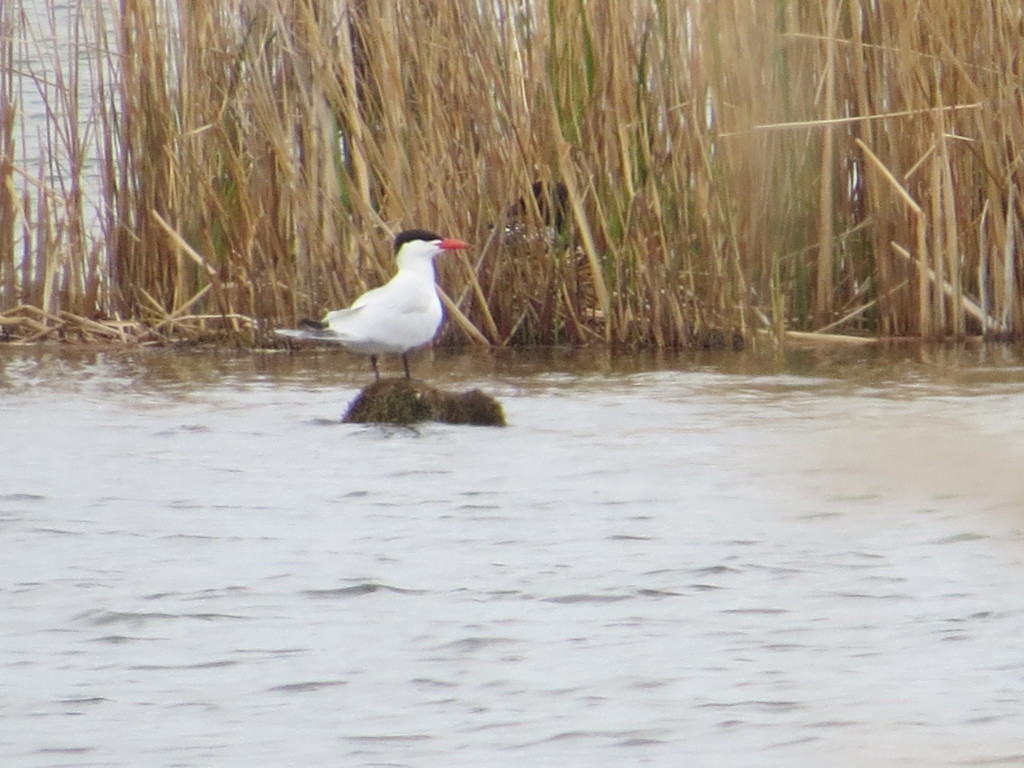
Shifting angles a bit shows just how easily that Common Loon’s nest can hide.
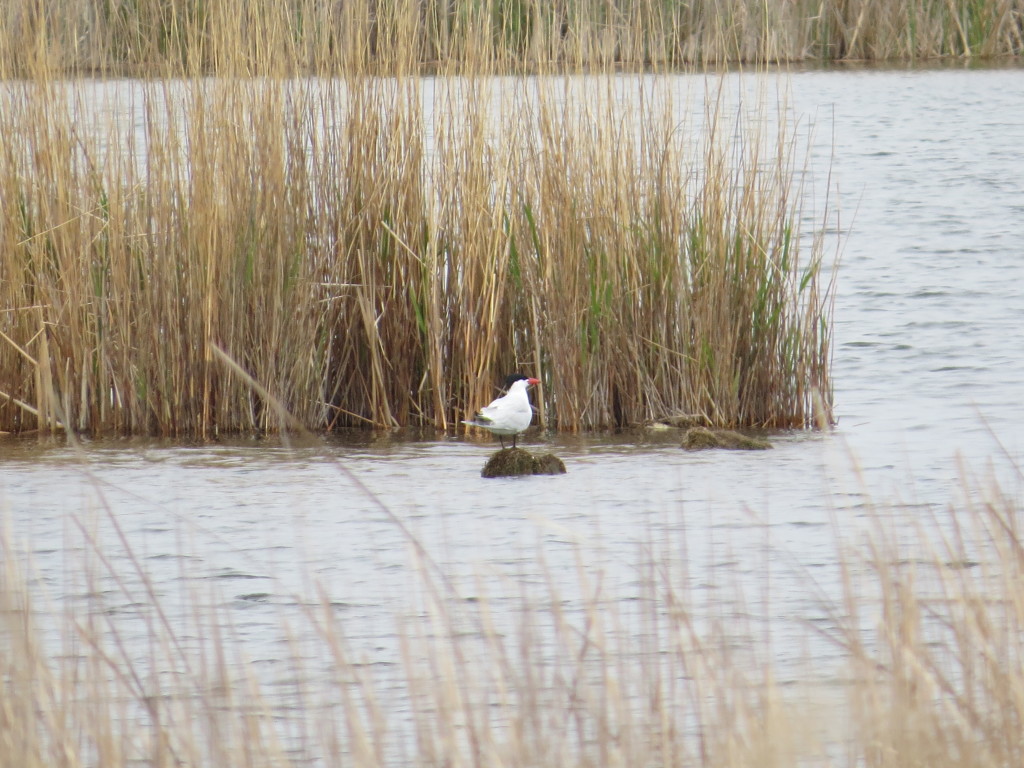
I also got to watch the Caspians take flight. It was a good learning experience to see what they looked like in the air and hear their guttural calls.
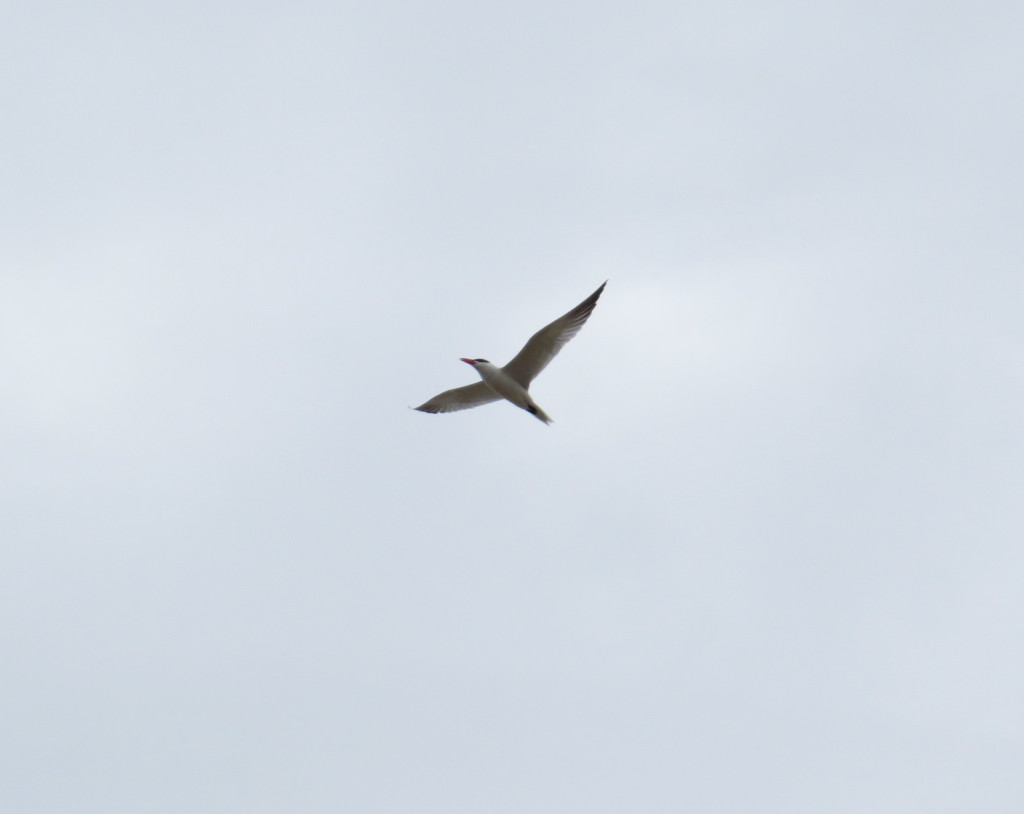
Can you see why I thought they were Gulls from a distance?
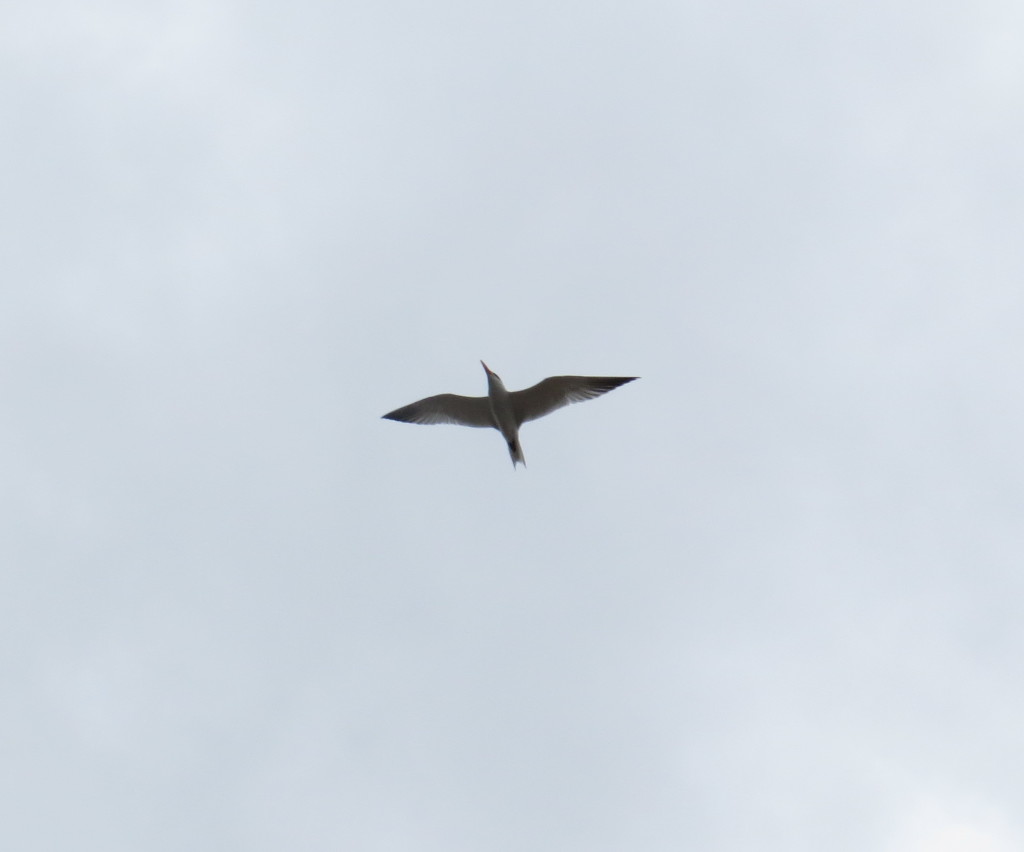
Every birder knows the law of lifers–once you finally get it, you never have trouble seeing it again. Terns out that I’d be putting this study of Caspians in flight to use several days later on the next adventure when I spied two flying over while I was filling up the car at a gas station.
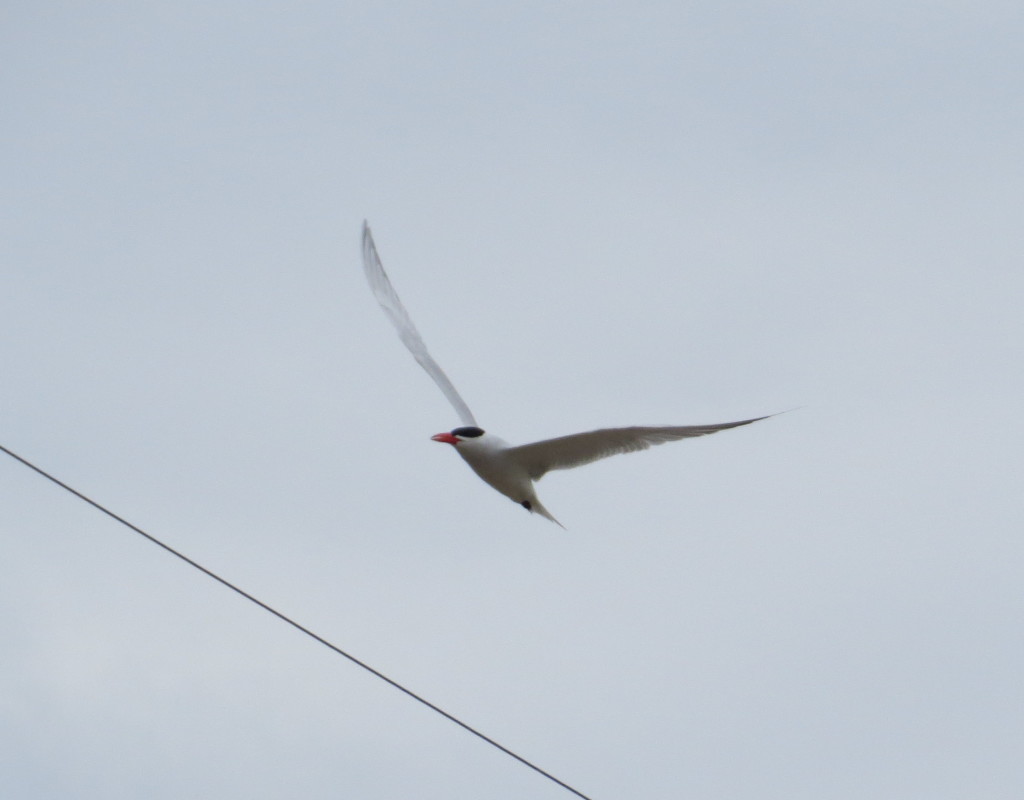
This was a most satisfying lifer. It was a much-wanted bird on our soil…er, water. Believe it or not, but there’s been a lot more lifering since the Caspian Tern, even another one here at home. With some hot night-birding, a giant shorebird grab, a Colorado trip, AND Scarlet Tanagers TEN minutes from home, the stories are stacking up and quickly becoming more prolific than Stephen King novels. Much, much, much more reading ahead–so much for a quiet period in my birding and blogging. Oh well, I’ll try to make the most of it.
Red and Black on Gray
Some days, like today, are gray and rainy. Some birds radiate their brilliance regardless. In my seemingly never-ending quest for a Wood Thrush lifer, currently a heard-only bird, I came across a couple of dapper and melodic fellows this morning that can brighten any day. First up is the Rose-breasted Grosbeak.
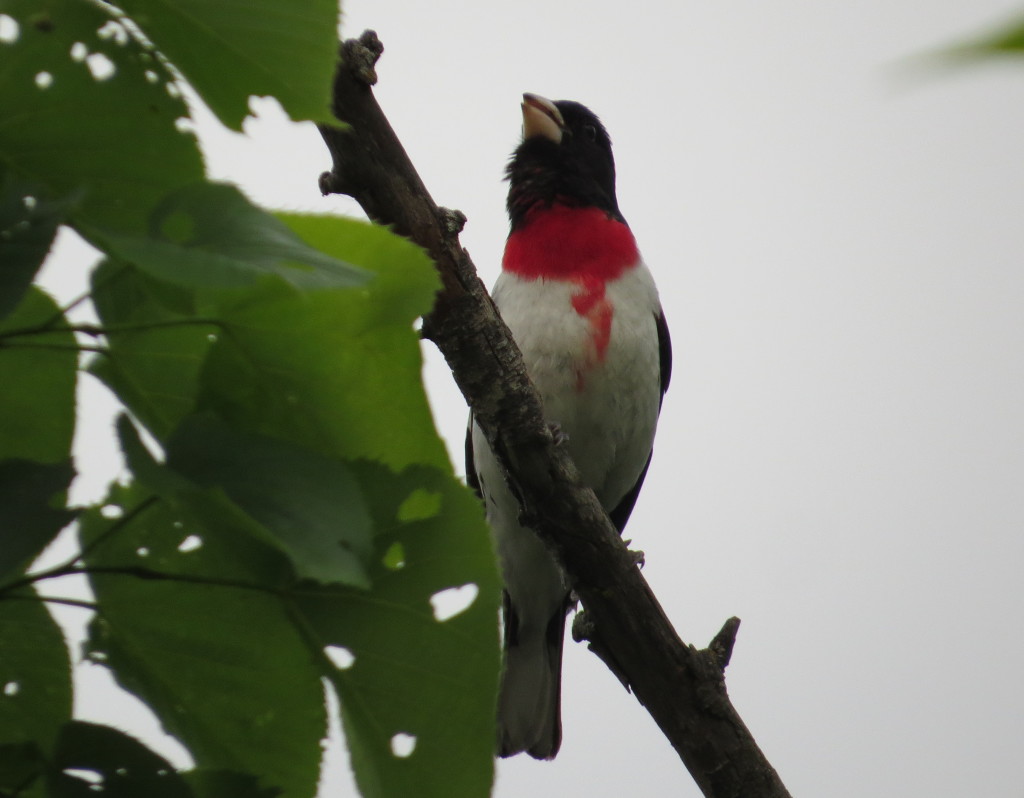
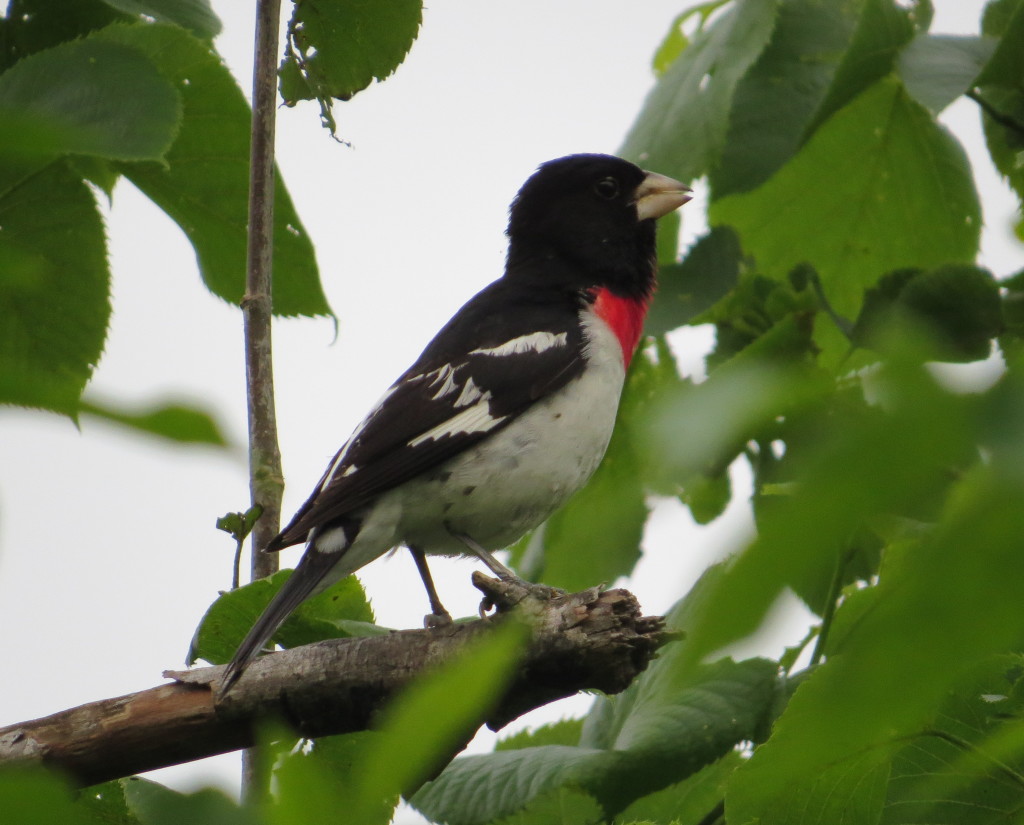 Next is the ever-lovely Scarlet Tanager. It’s hard for me to comprehend that I’ve seen both Western Tanager (more on that later) and now a Scarlet Tanager in the same week. Both are incredibly beautiful birds. Though the Scarlet Tanager is locally uncommon and the Western Tanager is rare state-wide, I’ve actually seen more Western Tanagers in my life. Today’s sighting on Timber Lake Road north of Sibley State Park was only the third time I’ve seen a Scarlet Tanager, and I got my best ever looks. It is such a hard bird to find. Even if it is present, it favors the canopy and is not always conspicuous. With Scarlet Tanager sightings you can have two but never all three of the following: a motionless bird, a conspicuous bird, good light. With a bird as good-looking as SCTA, the first two are often good enough.
Next is the ever-lovely Scarlet Tanager. It’s hard for me to comprehend that I’ve seen both Western Tanager (more on that later) and now a Scarlet Tanager in the same week. Both are incredibly beautiful birds. Though the Scarlet Tanager is locally uncommon and the Western Tanager is rare state-wide, I’ve actually seen more Western Tanagers in my life. Today’s sighting on Timber Lake Road north of Sibley State Park was only the third time I’ve seen a Scarlet Tanager, and I got my best ever looks. It is such a hard bird to find. Even if it is present, it favors the canopy and is not always conspicuous. With Scarlet Tanager sightings you can have two but never all three of the following: a motionless bird, a conspicuous bird, good light. With a bird as good-looking as SCTA, the first two are often good enough.
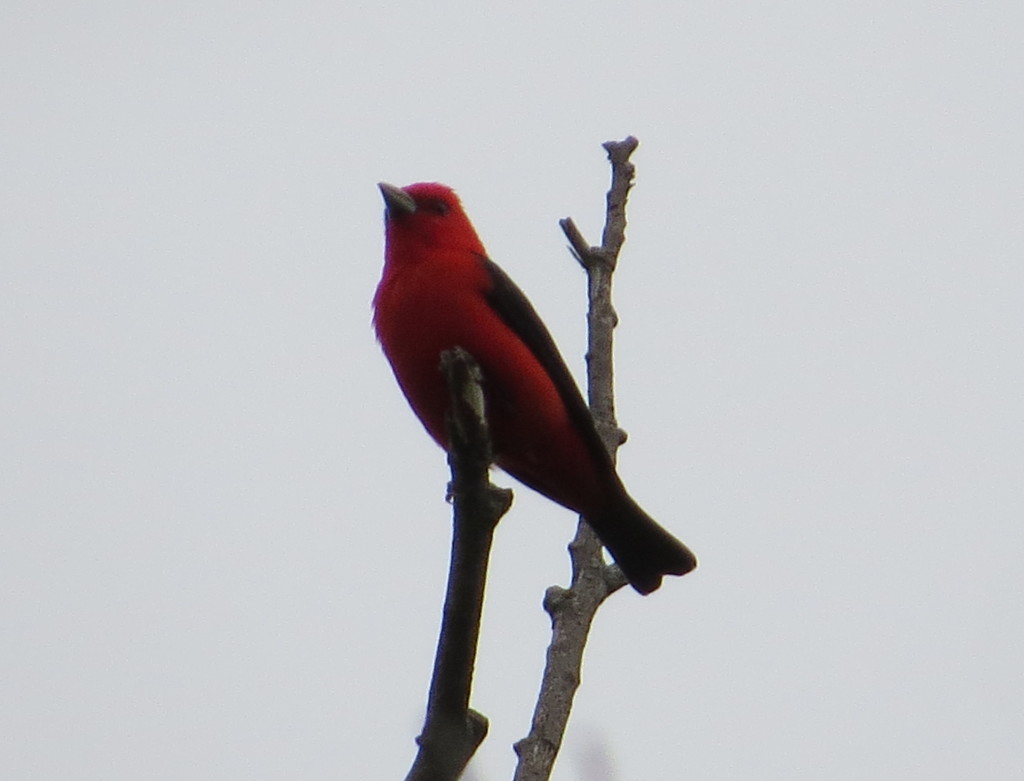
I’ve learned the Scarlet’s song which helped me track this one down this morning. Identifying a tree-top loving bird by just its audio is a must this time of year with the trees fully leafed out.
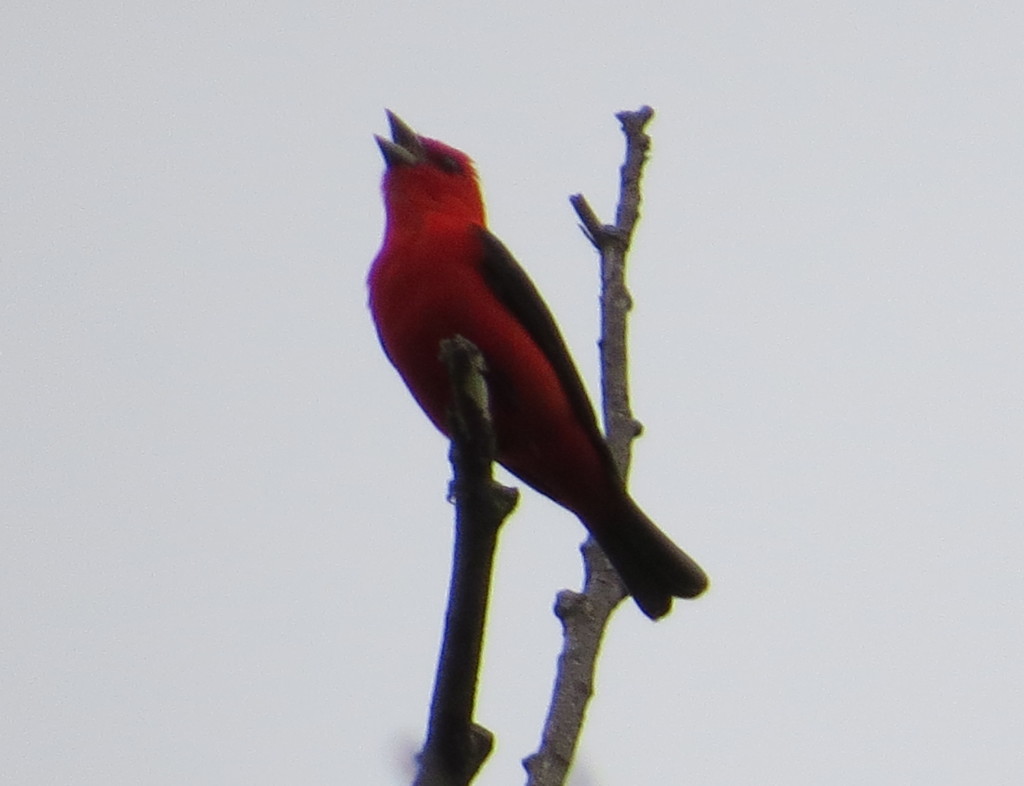
Seeing and photographing a Scarlet Tanager was a major summer birding goal of mine. I just got done with school on Friday. Not a bad start.
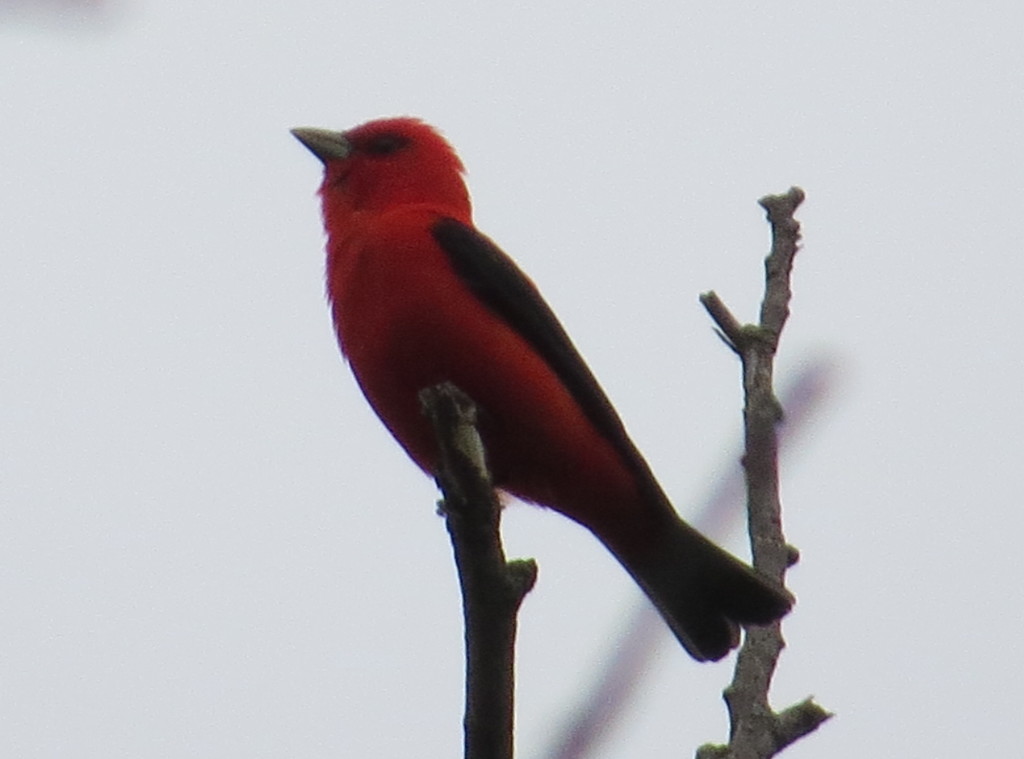
More time shall be spent this summer in the deciduous woods in the northern parts of Kandiyohi County. The quest shall continue for finally seeing a Wood Thrush and getting the trifecta of perfect SCTA viewing conditions!
